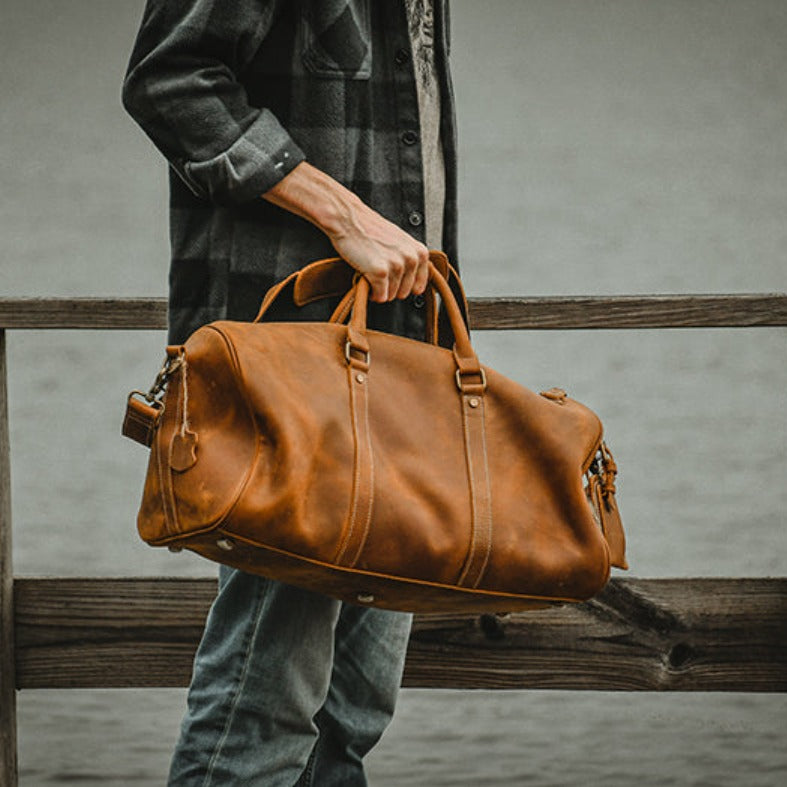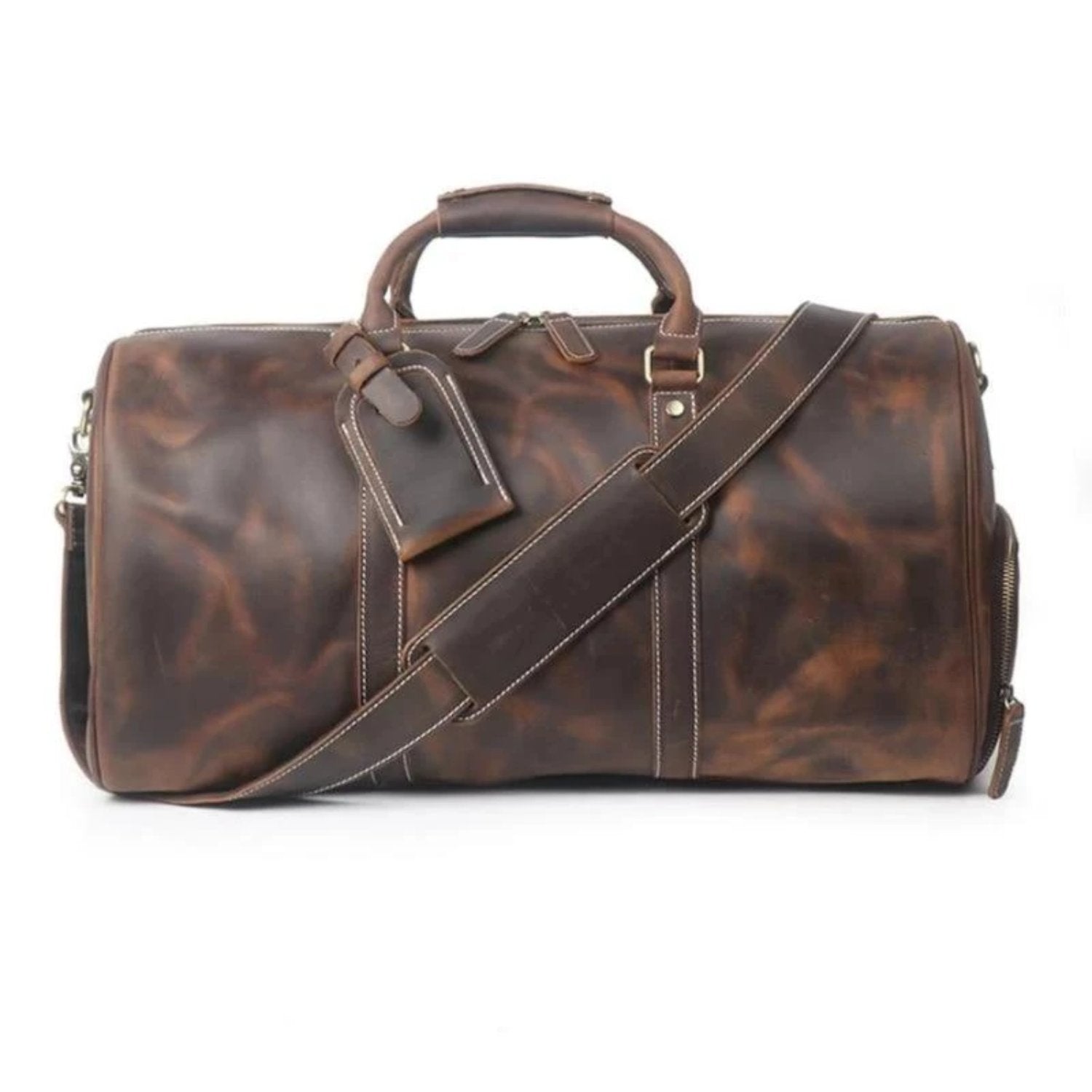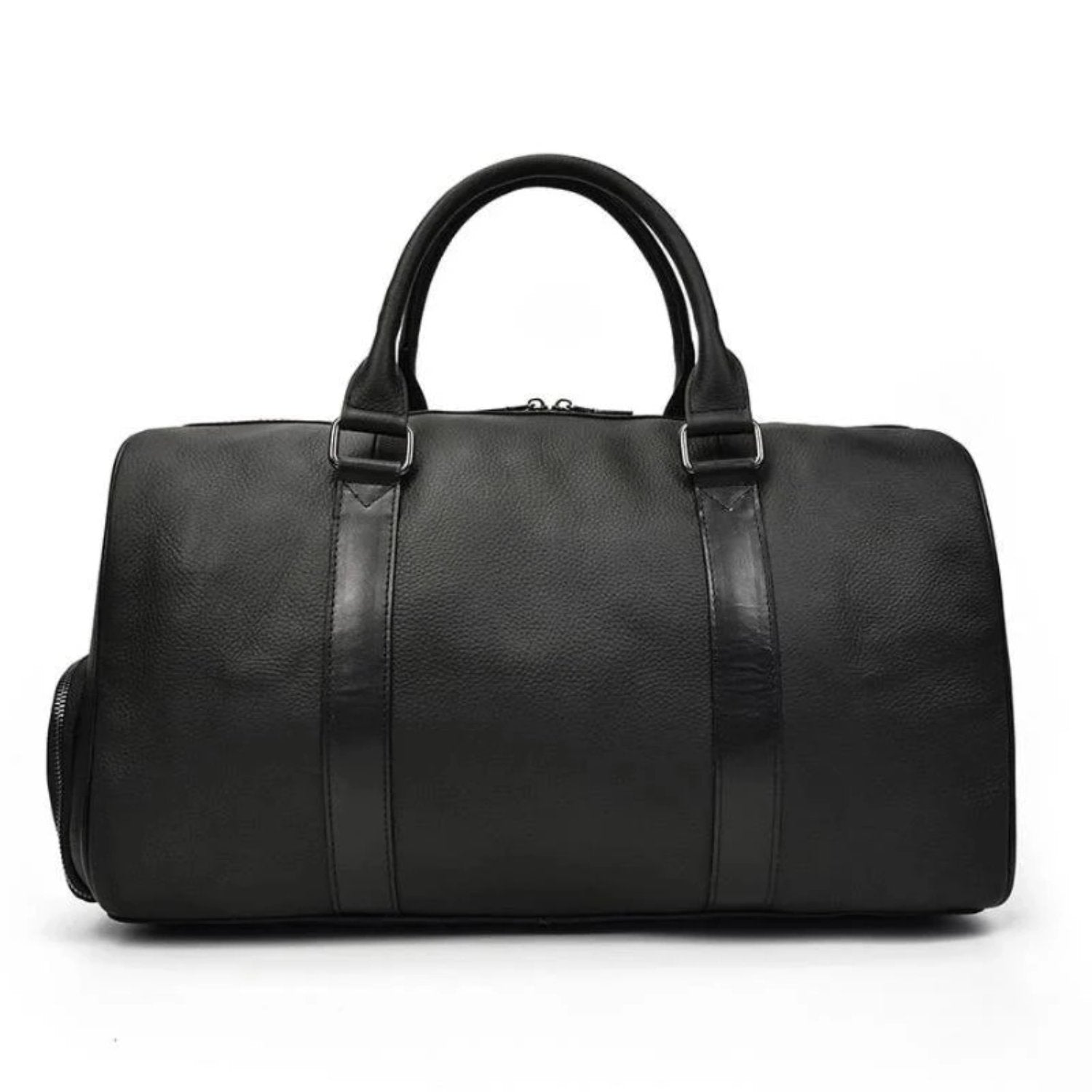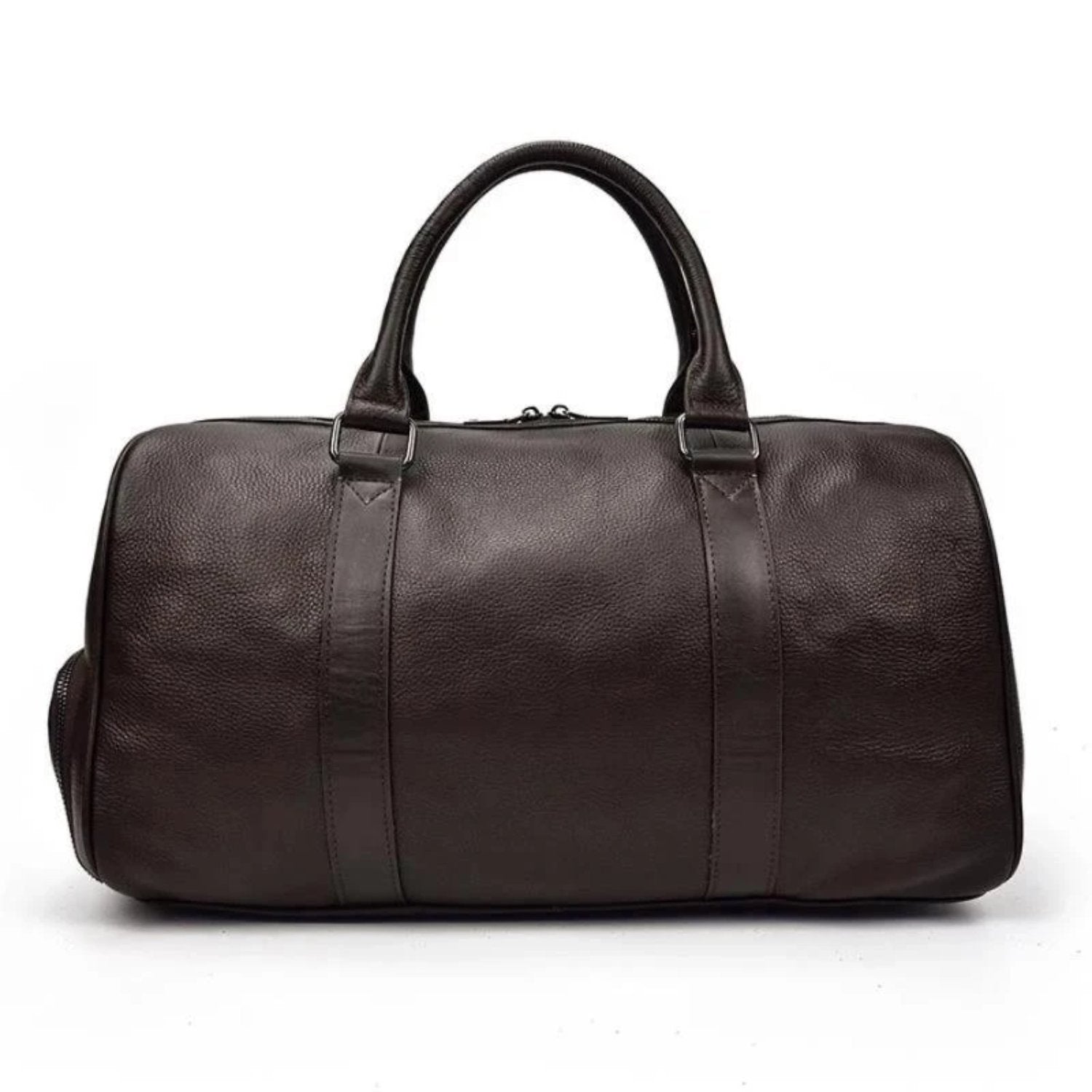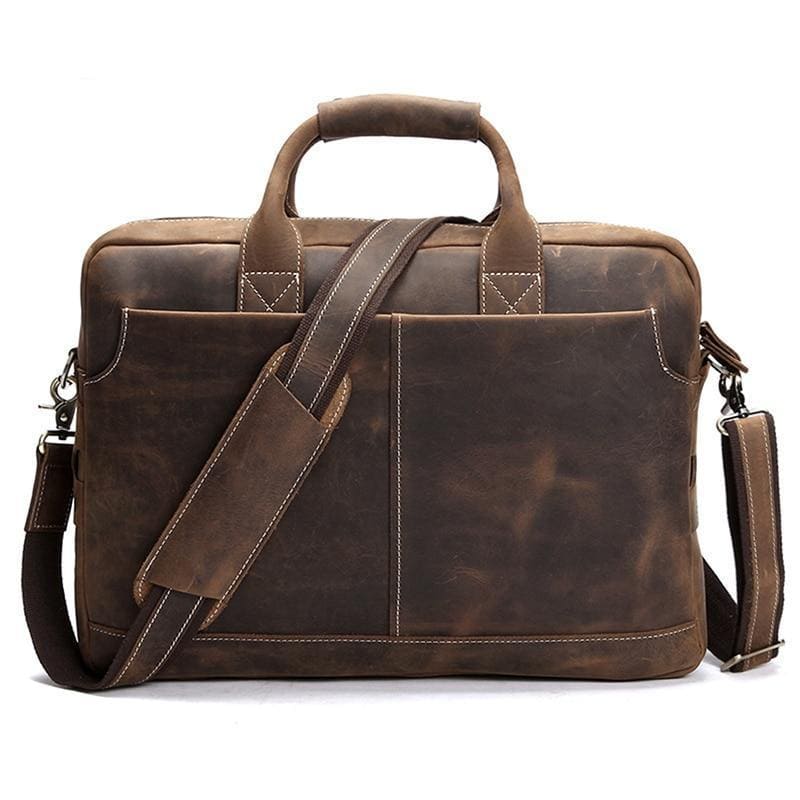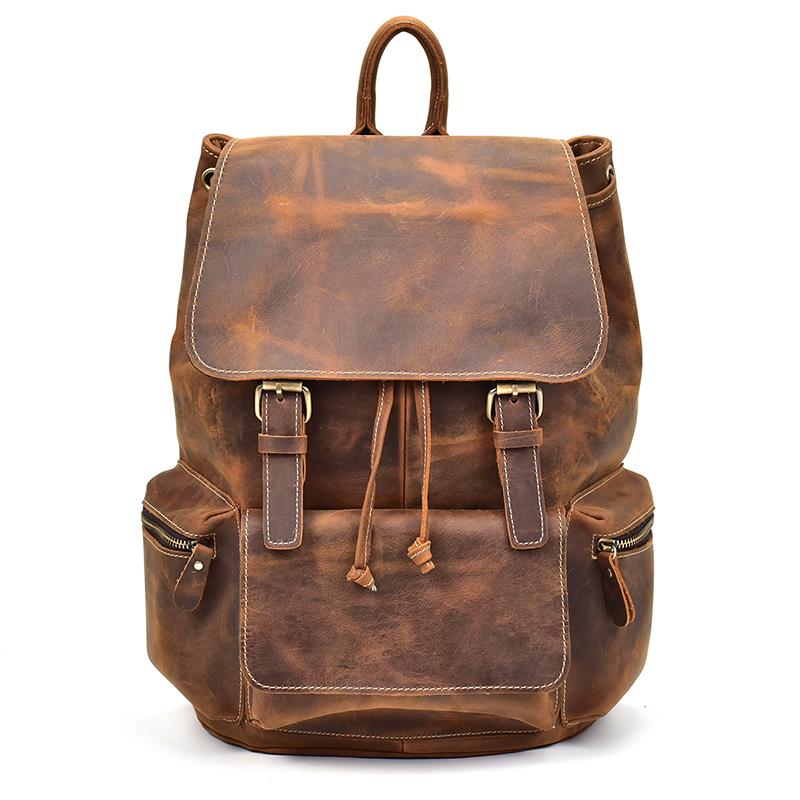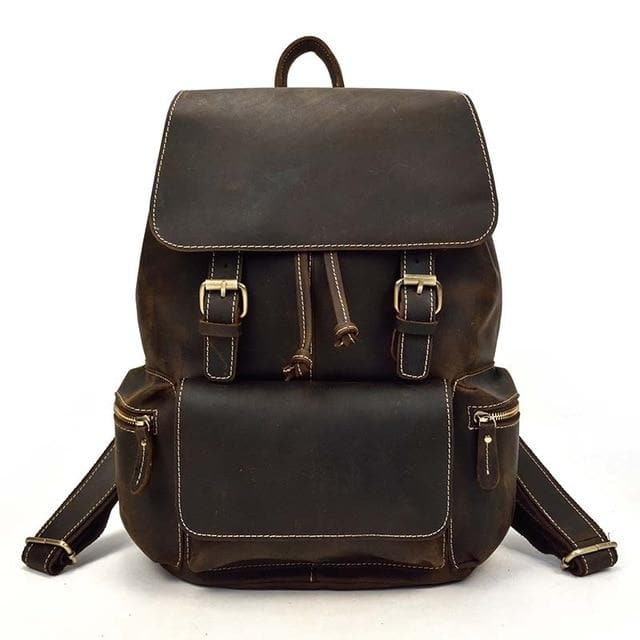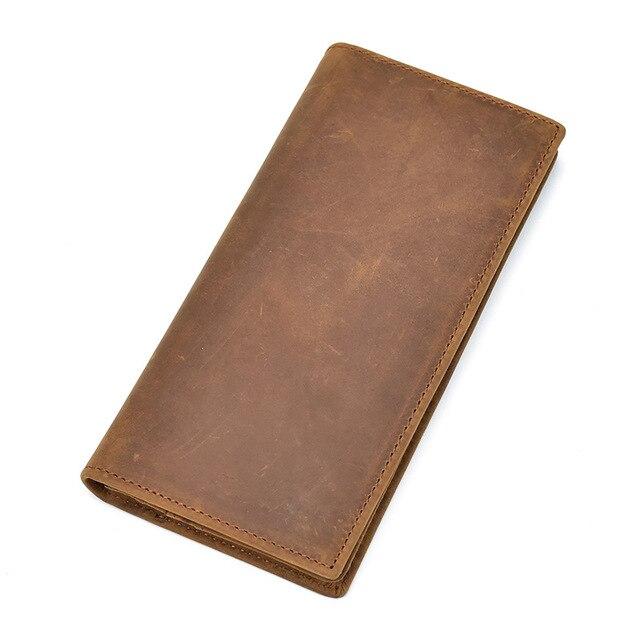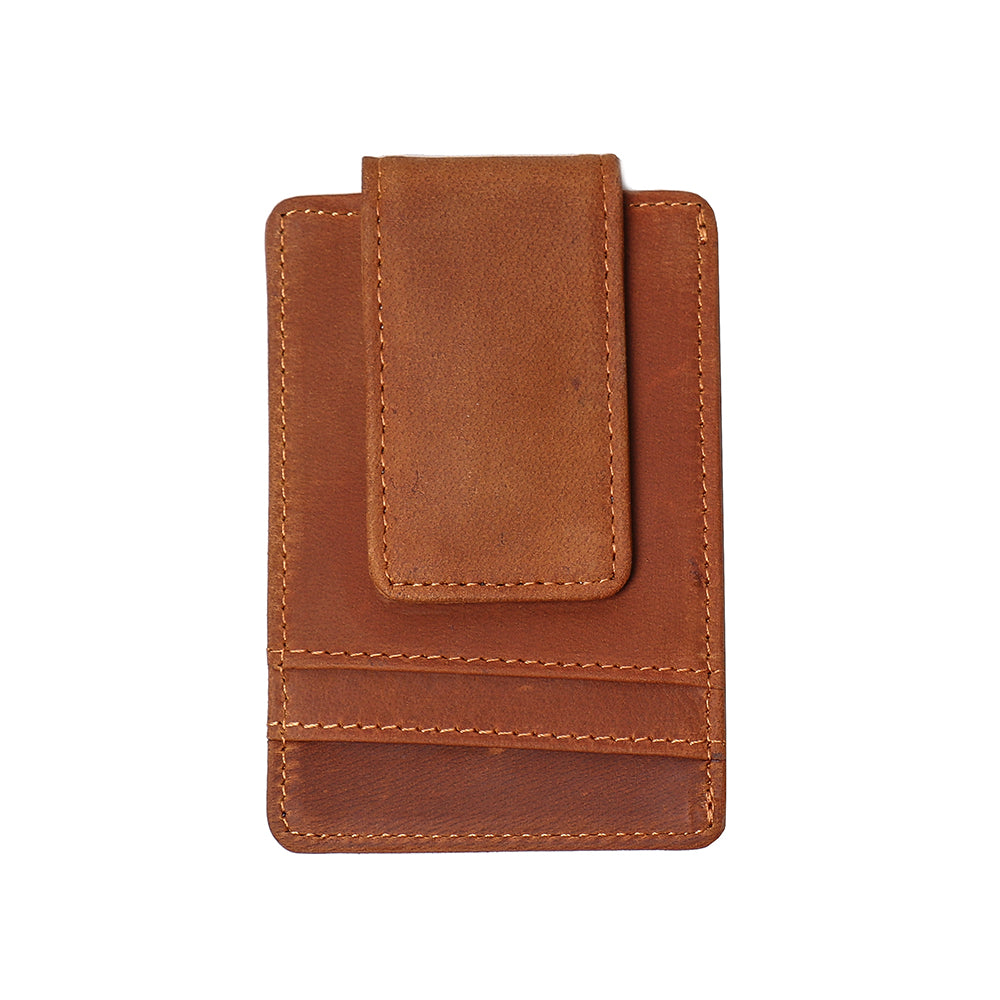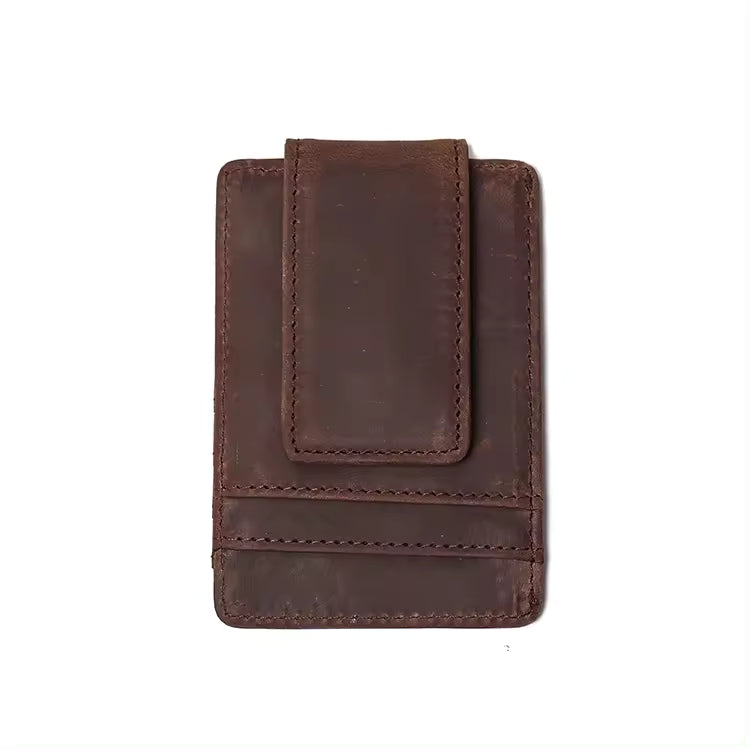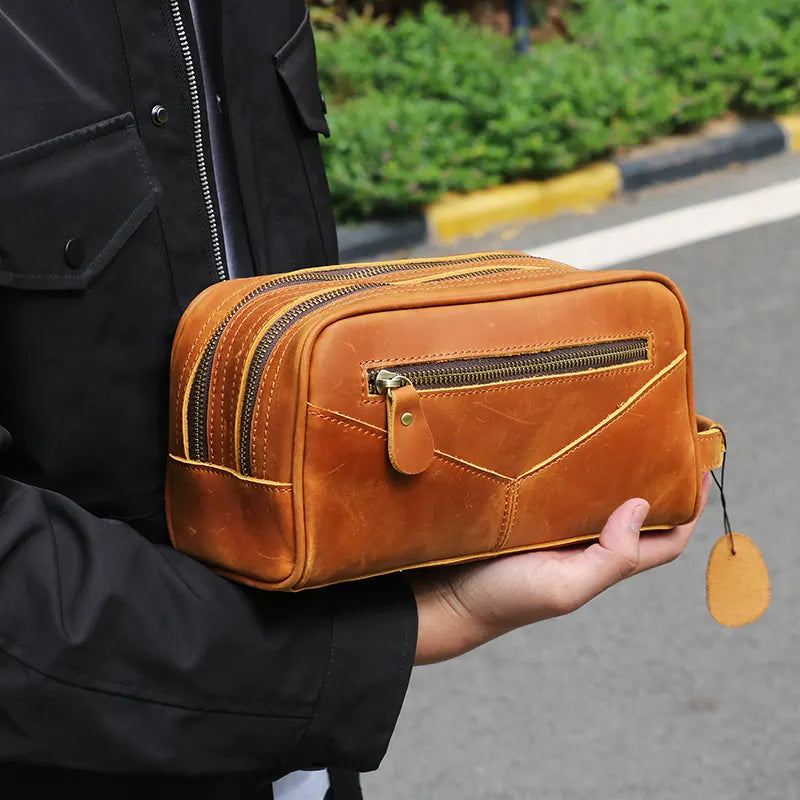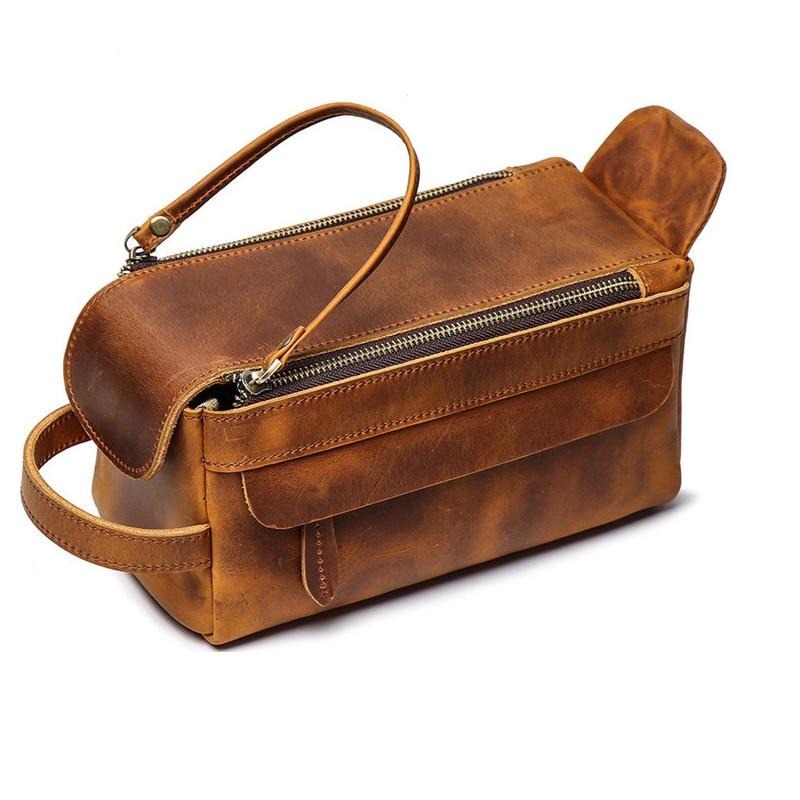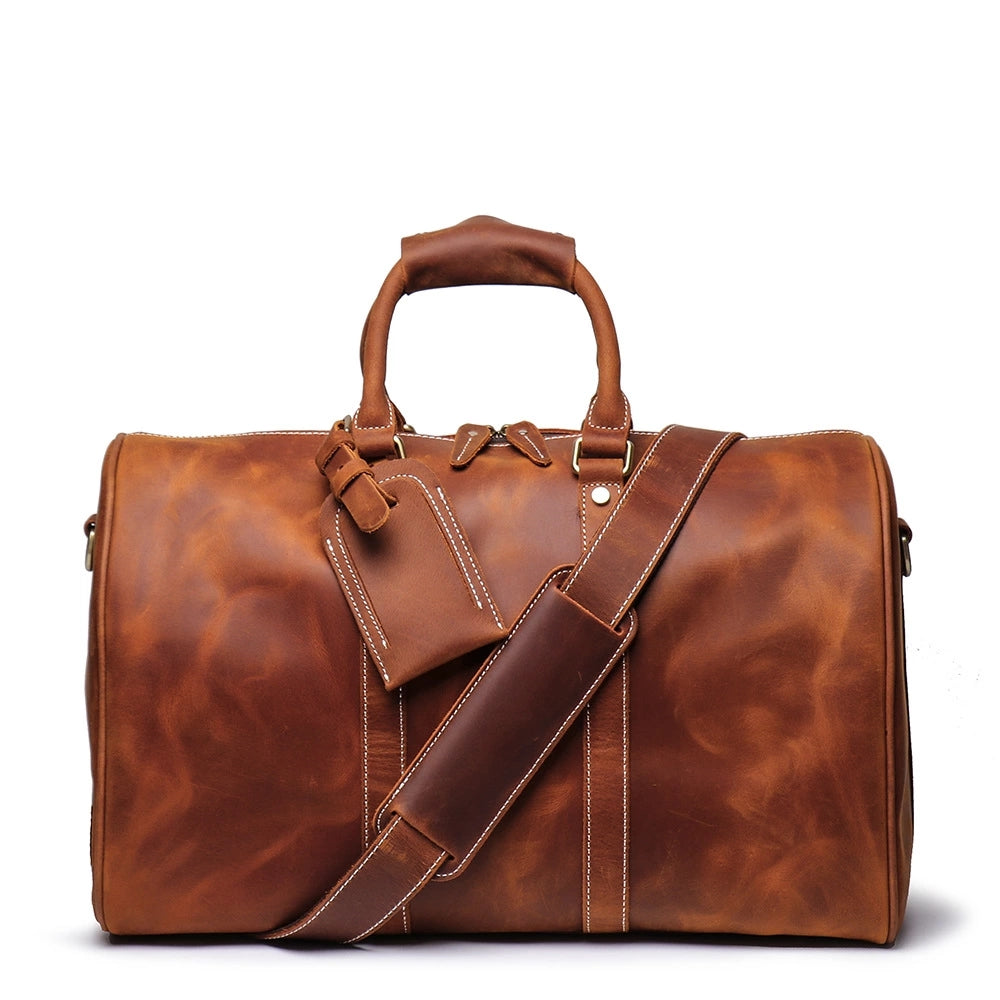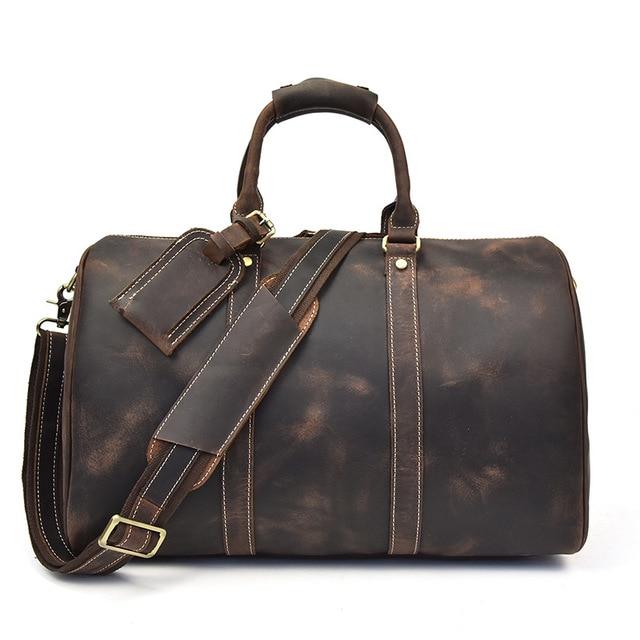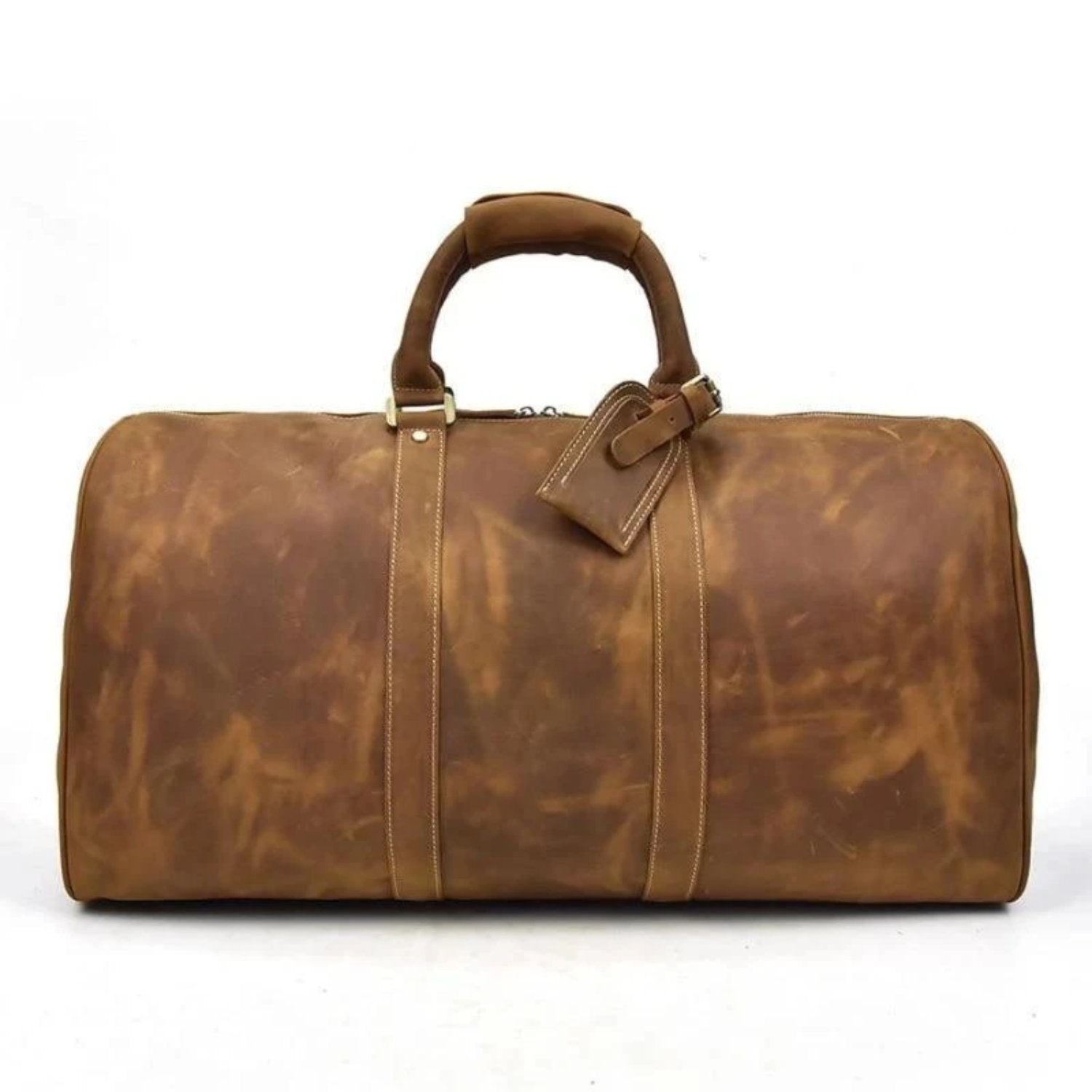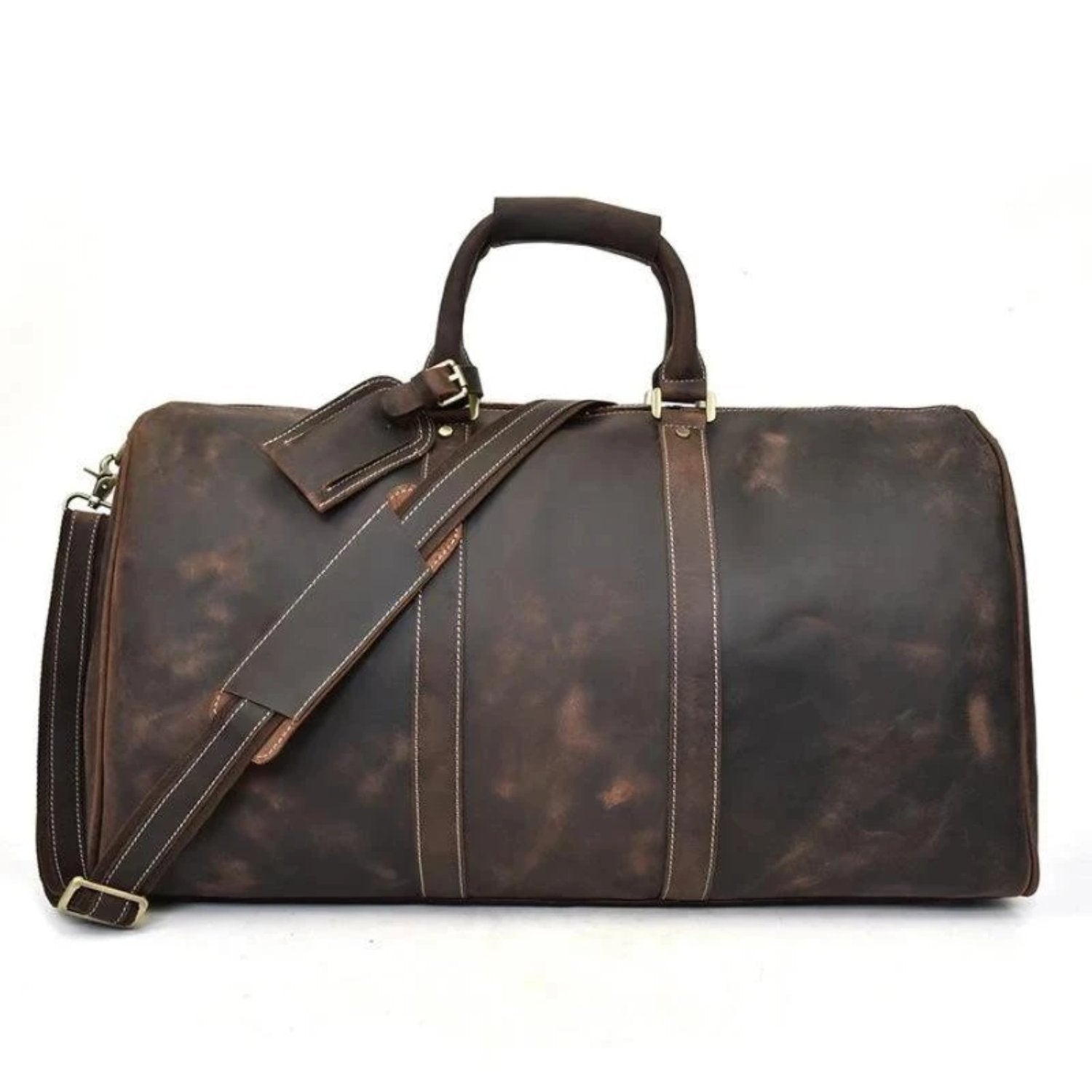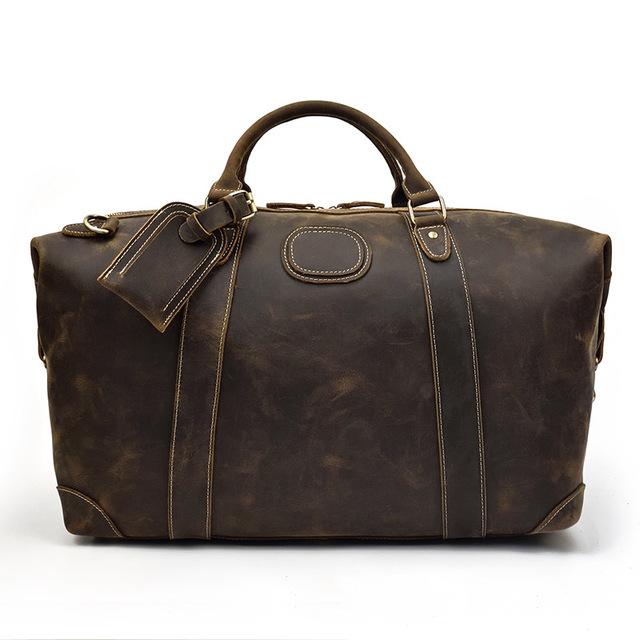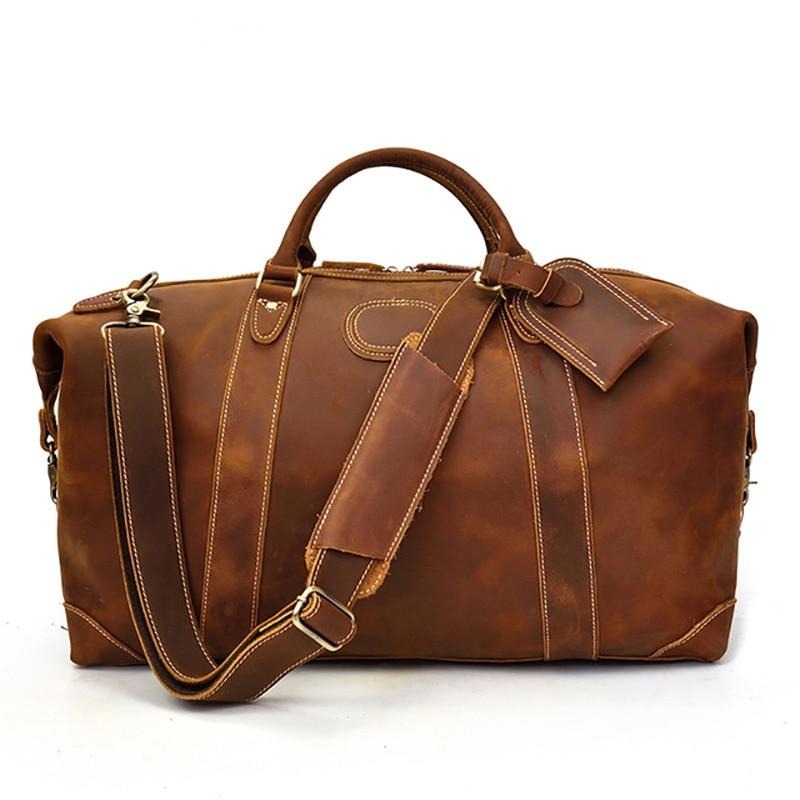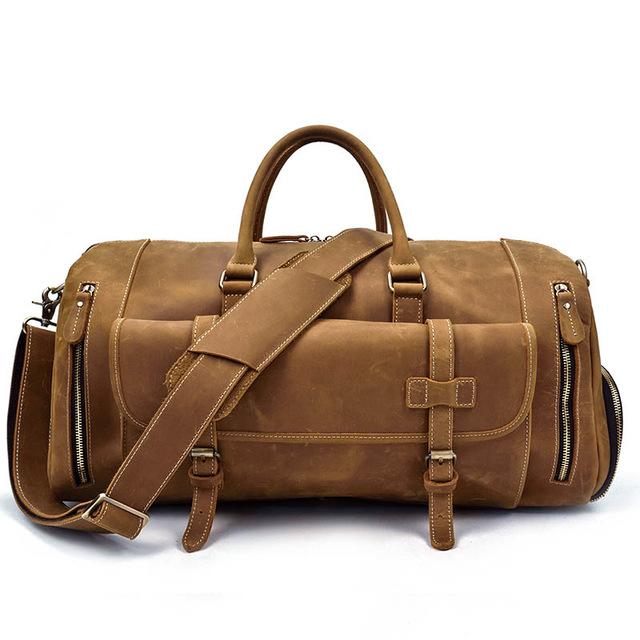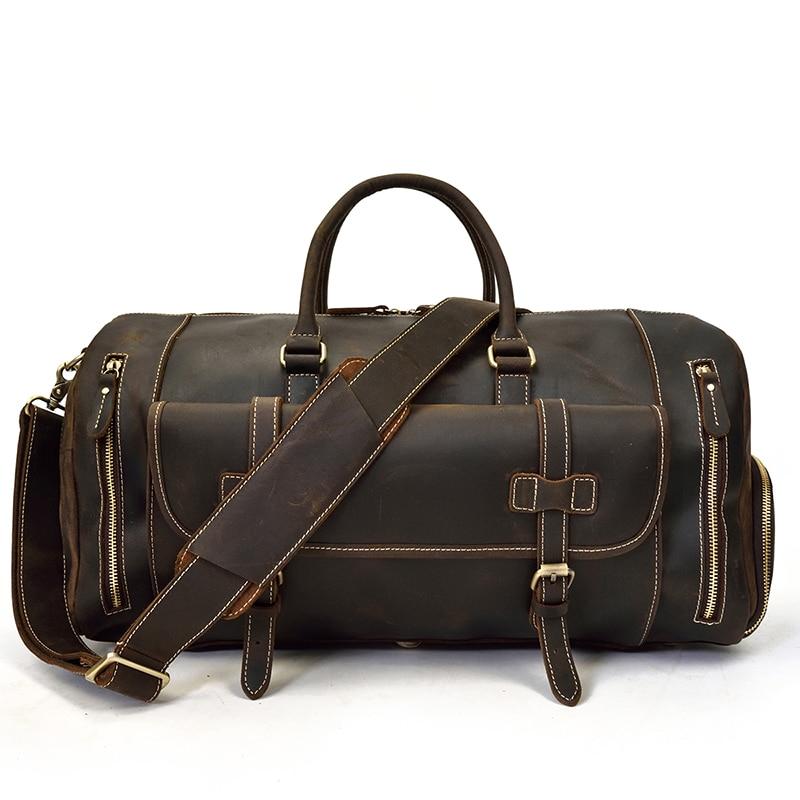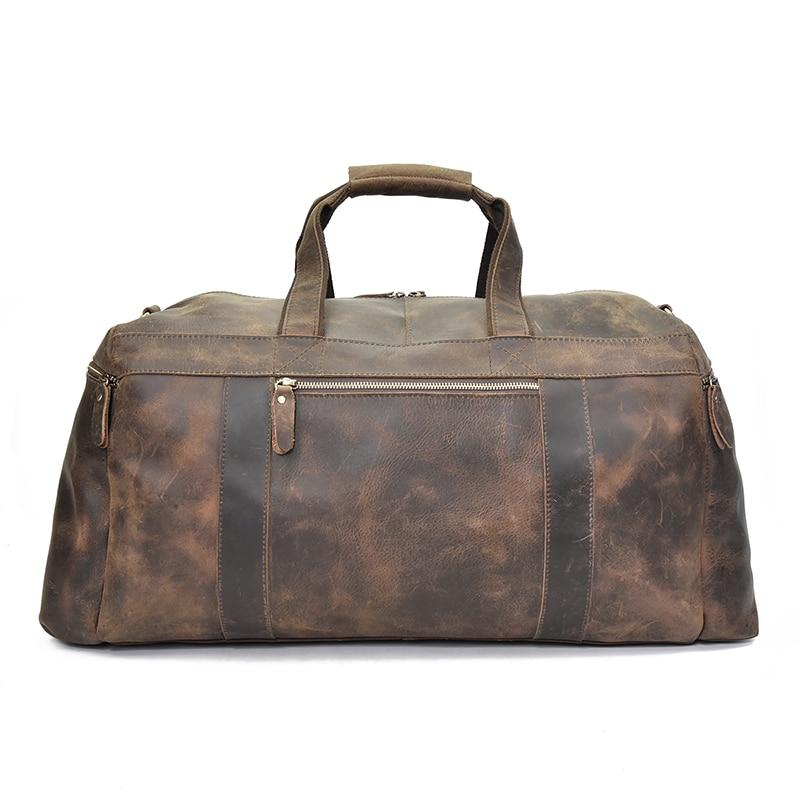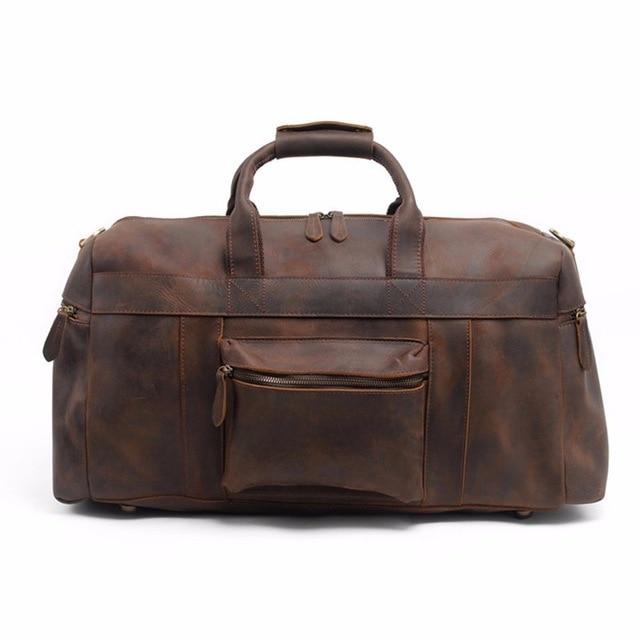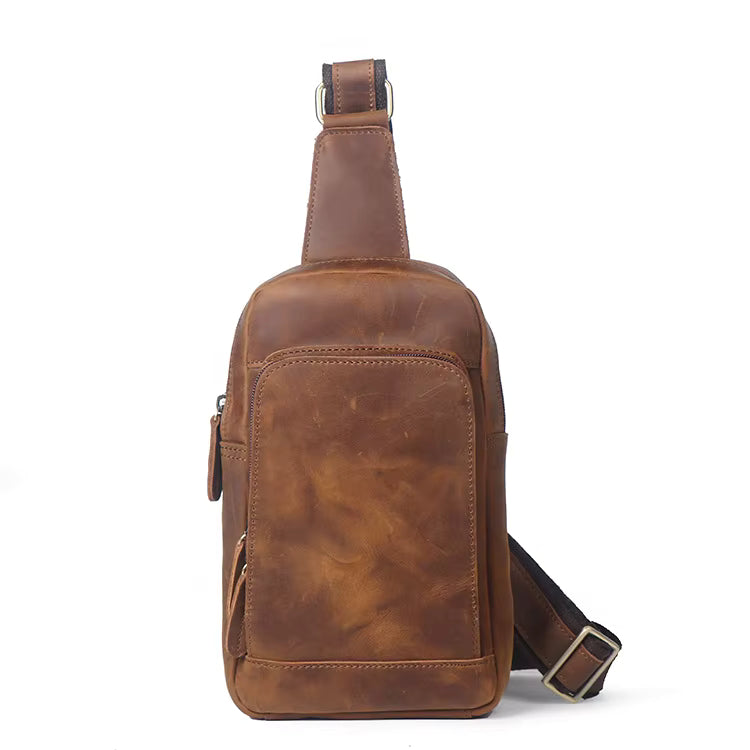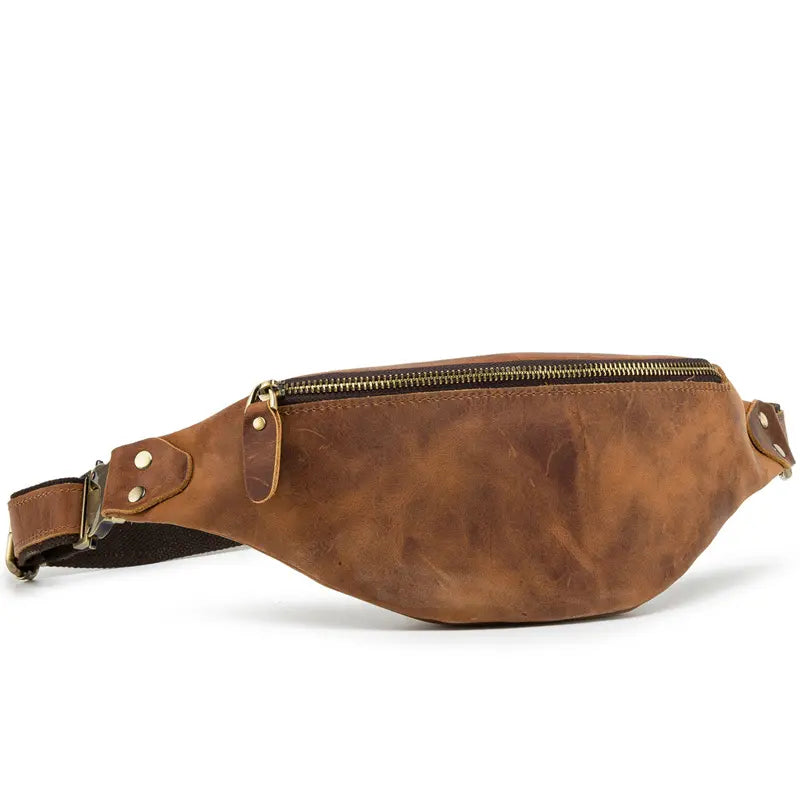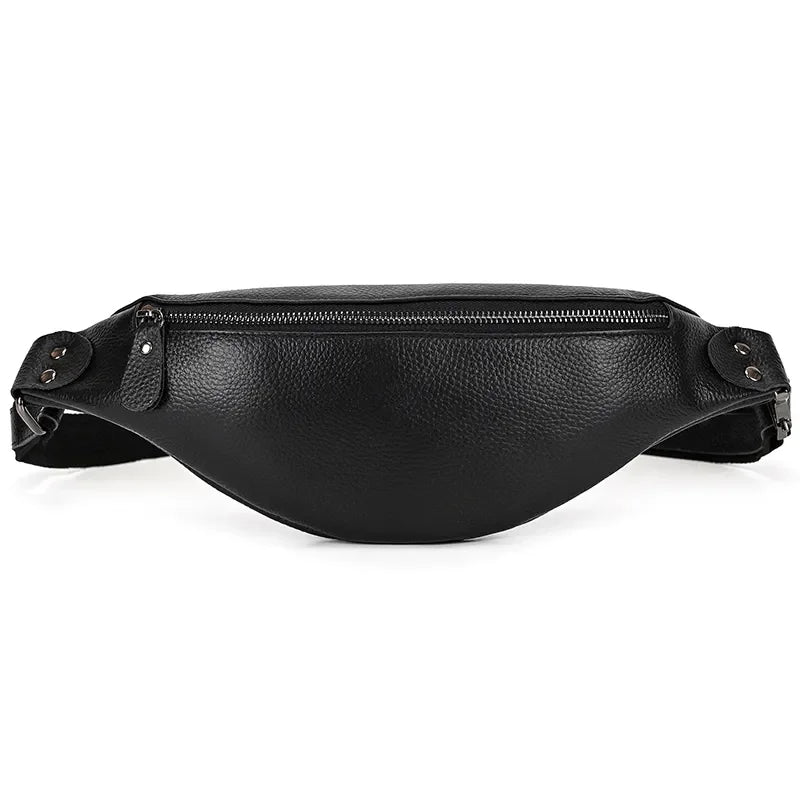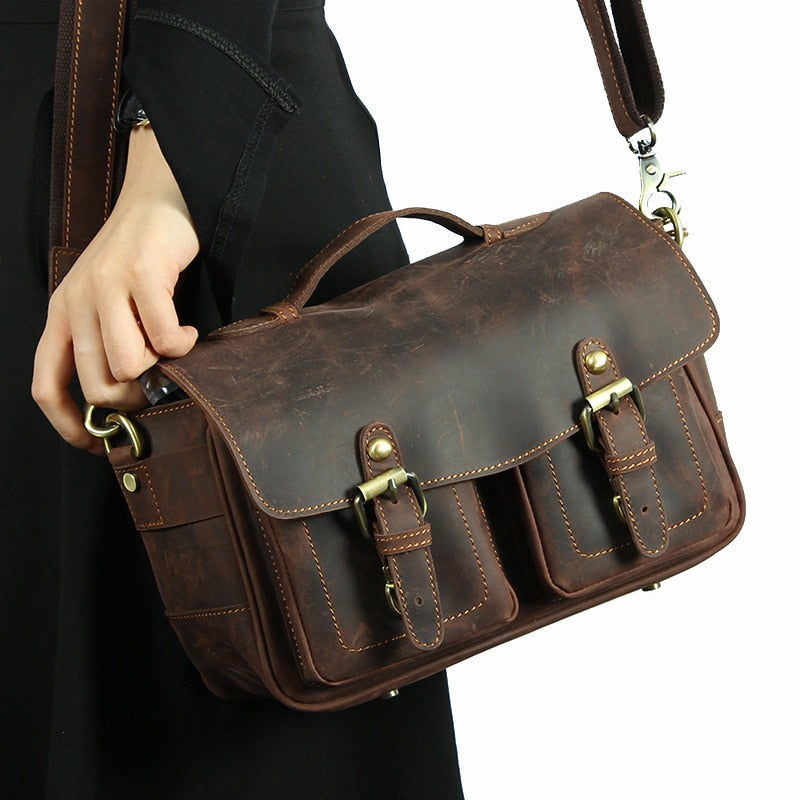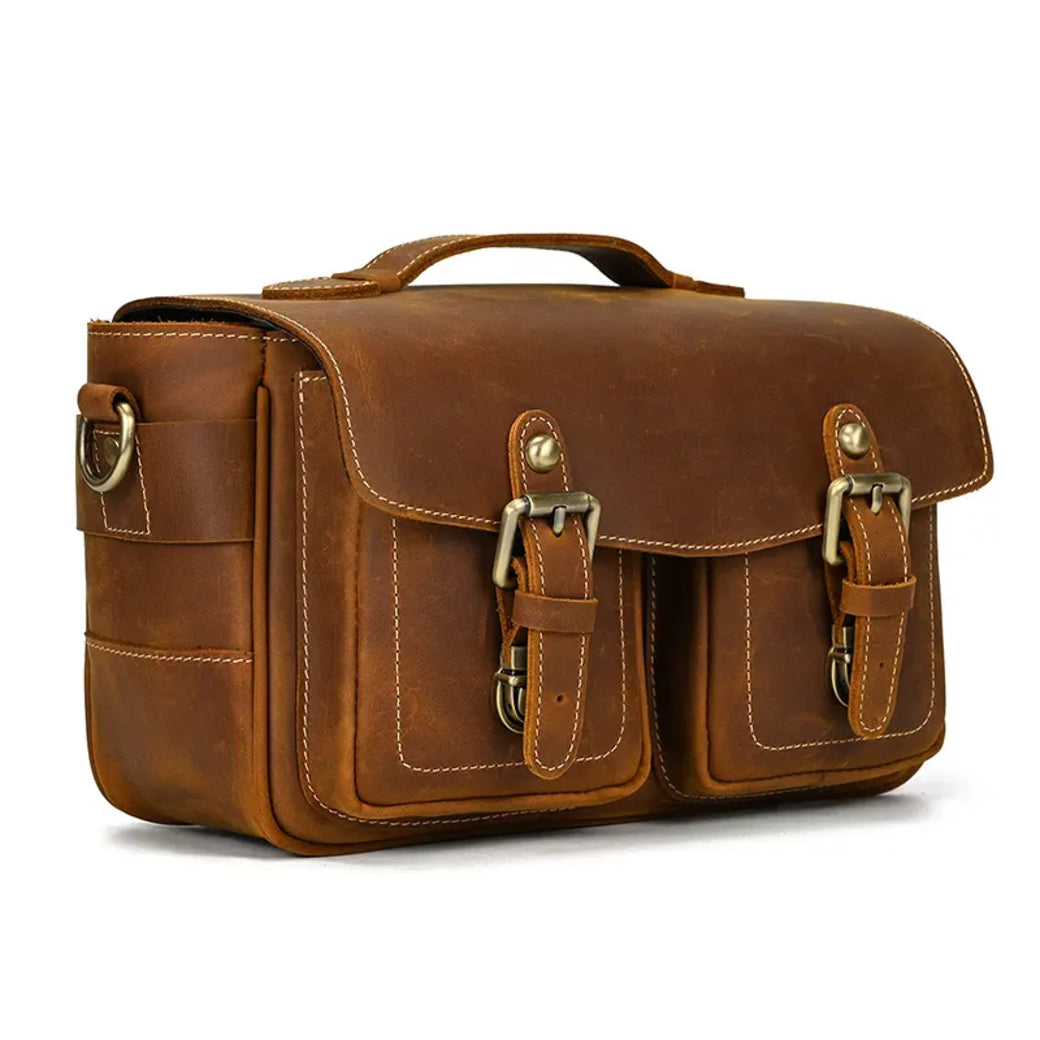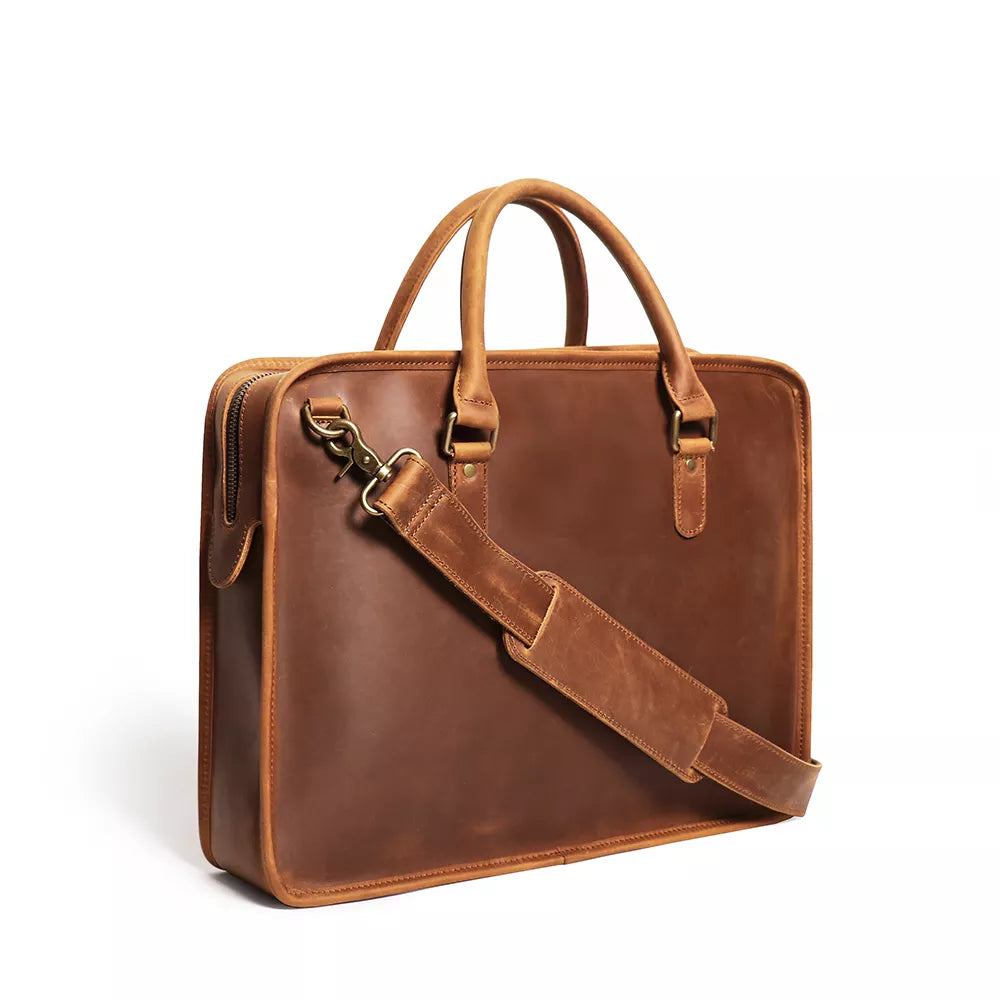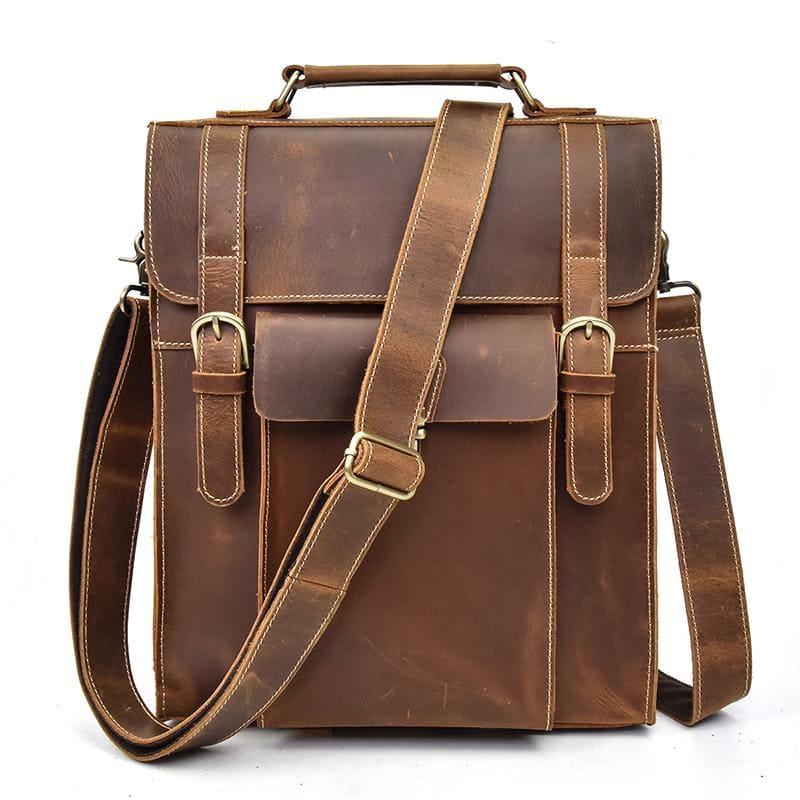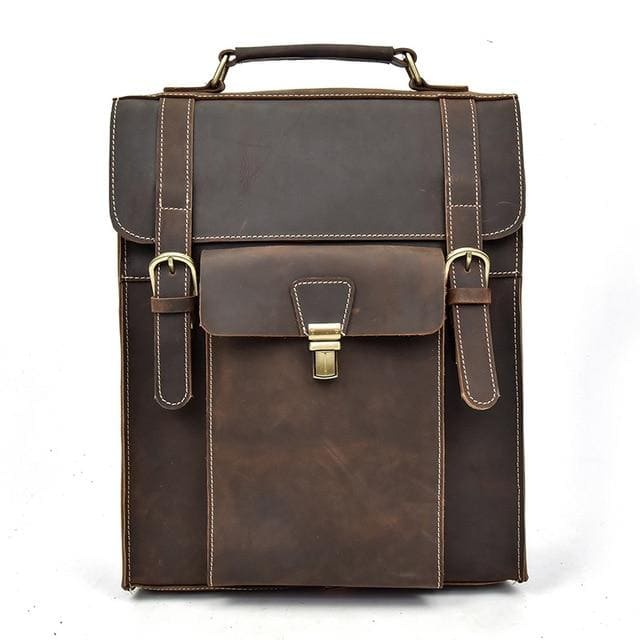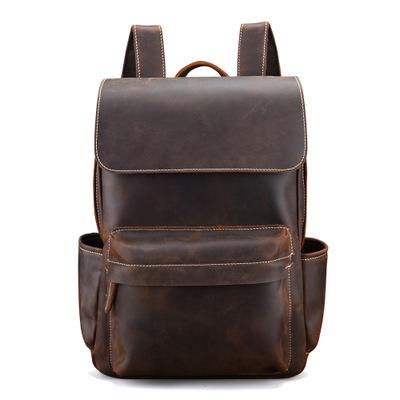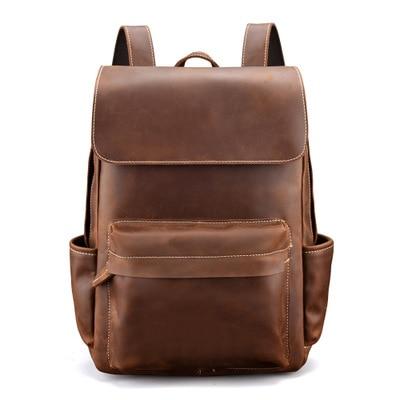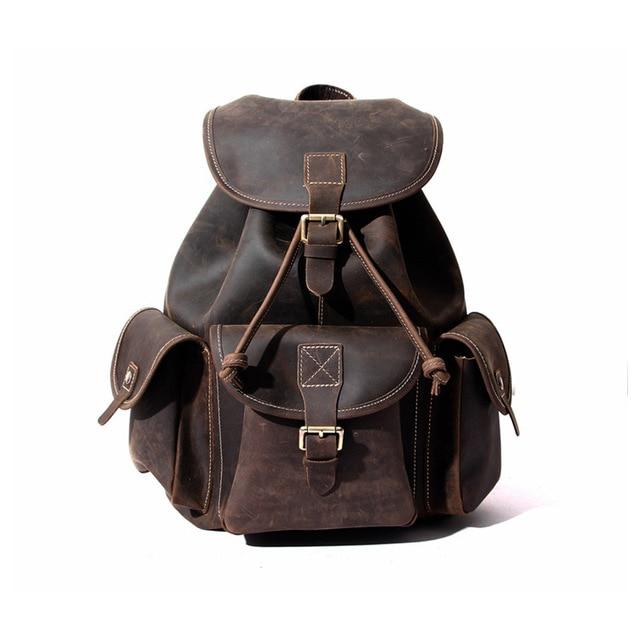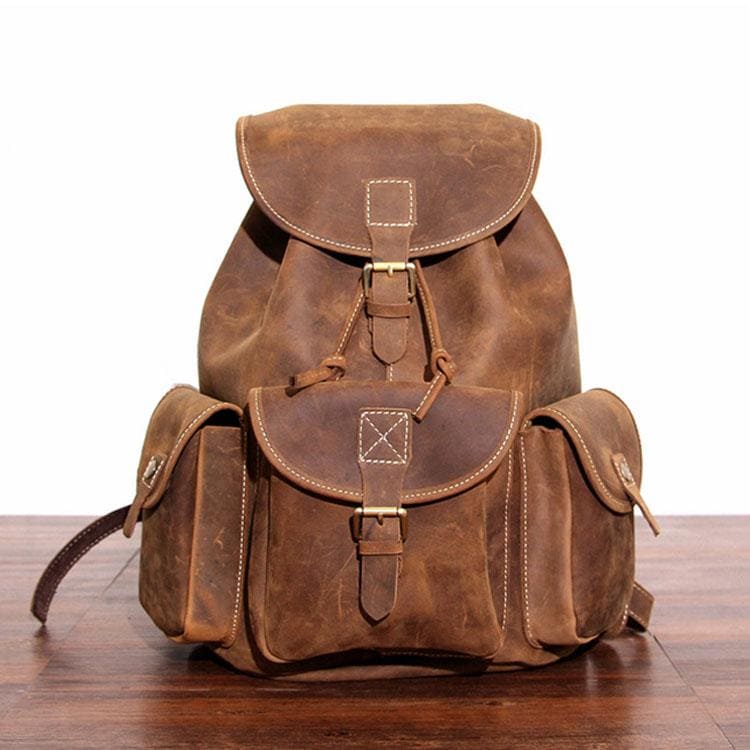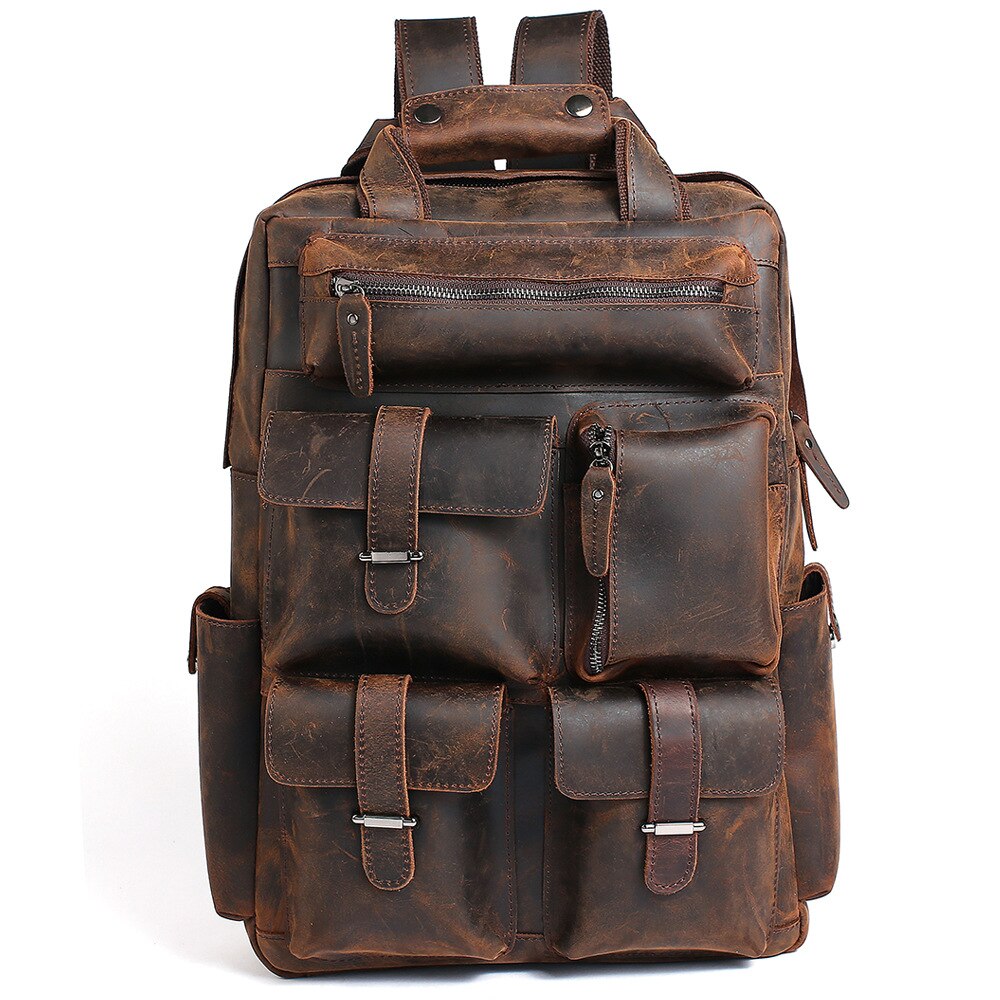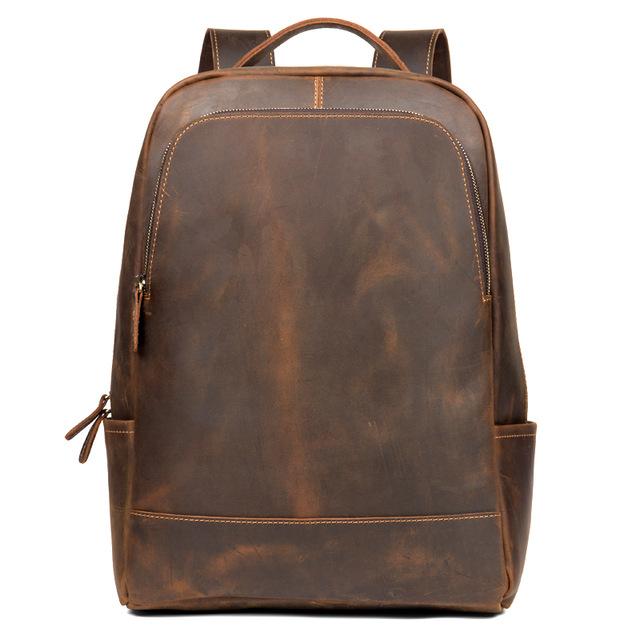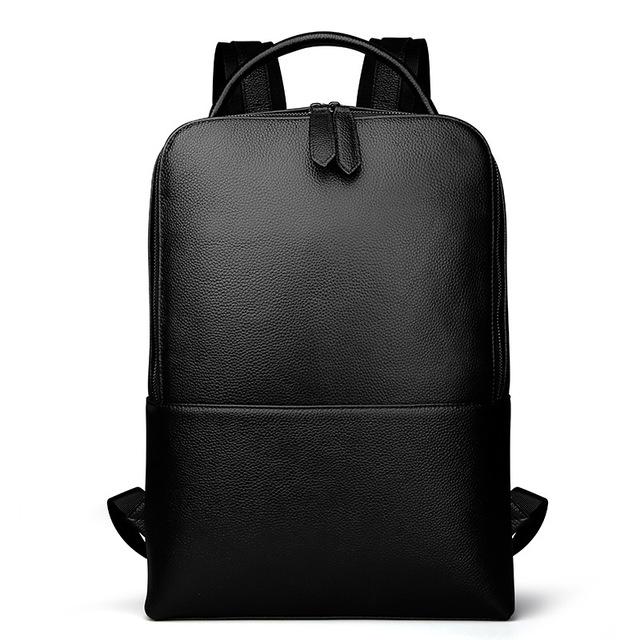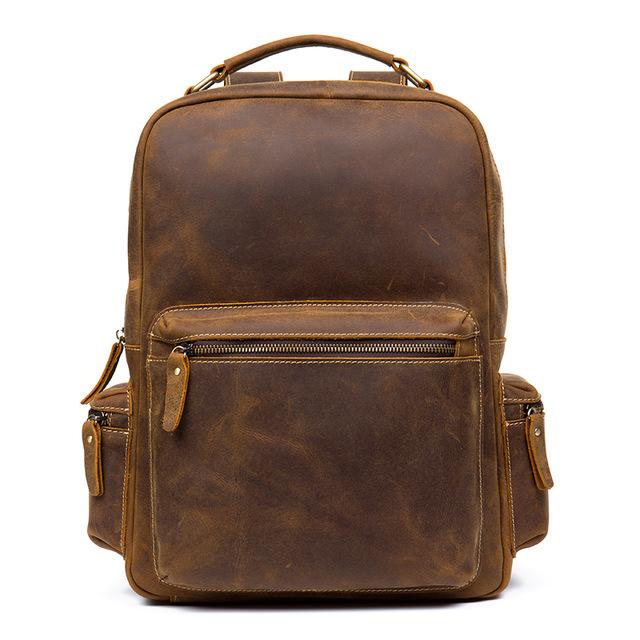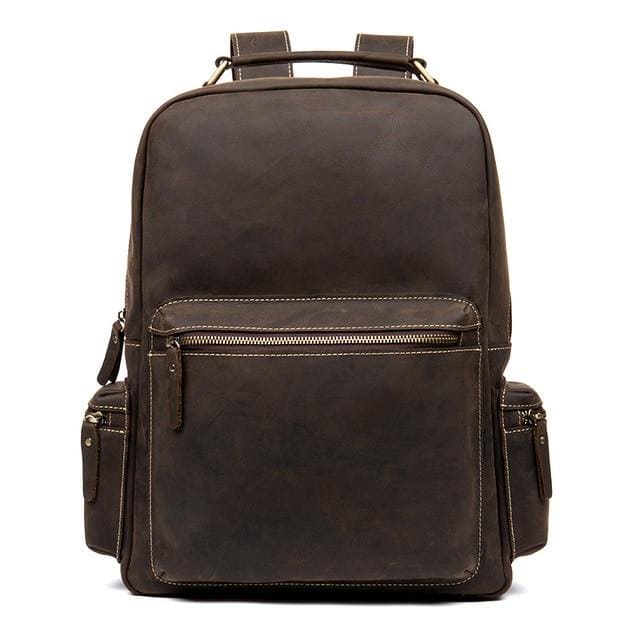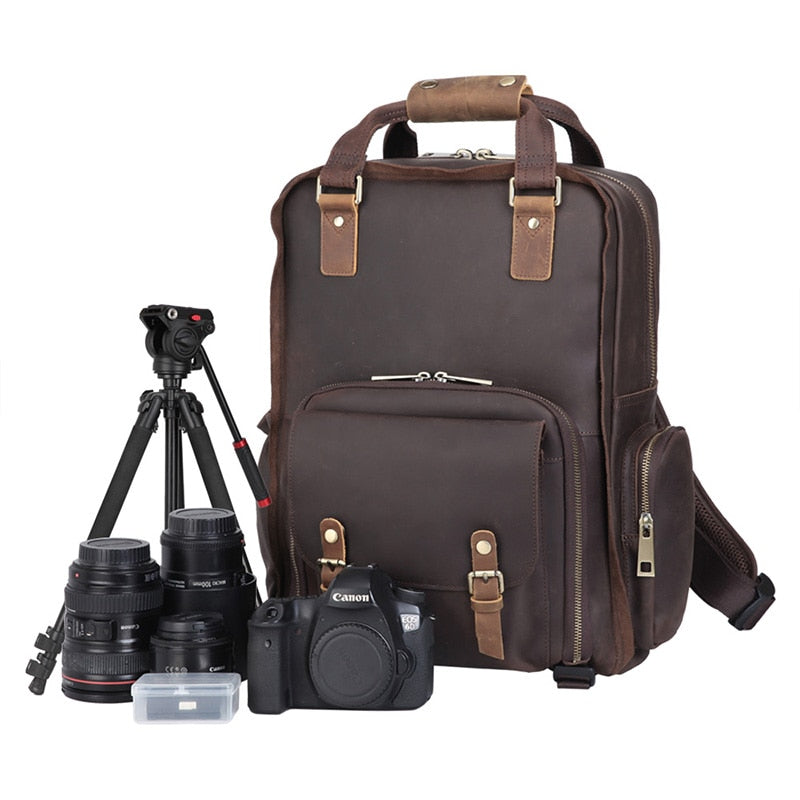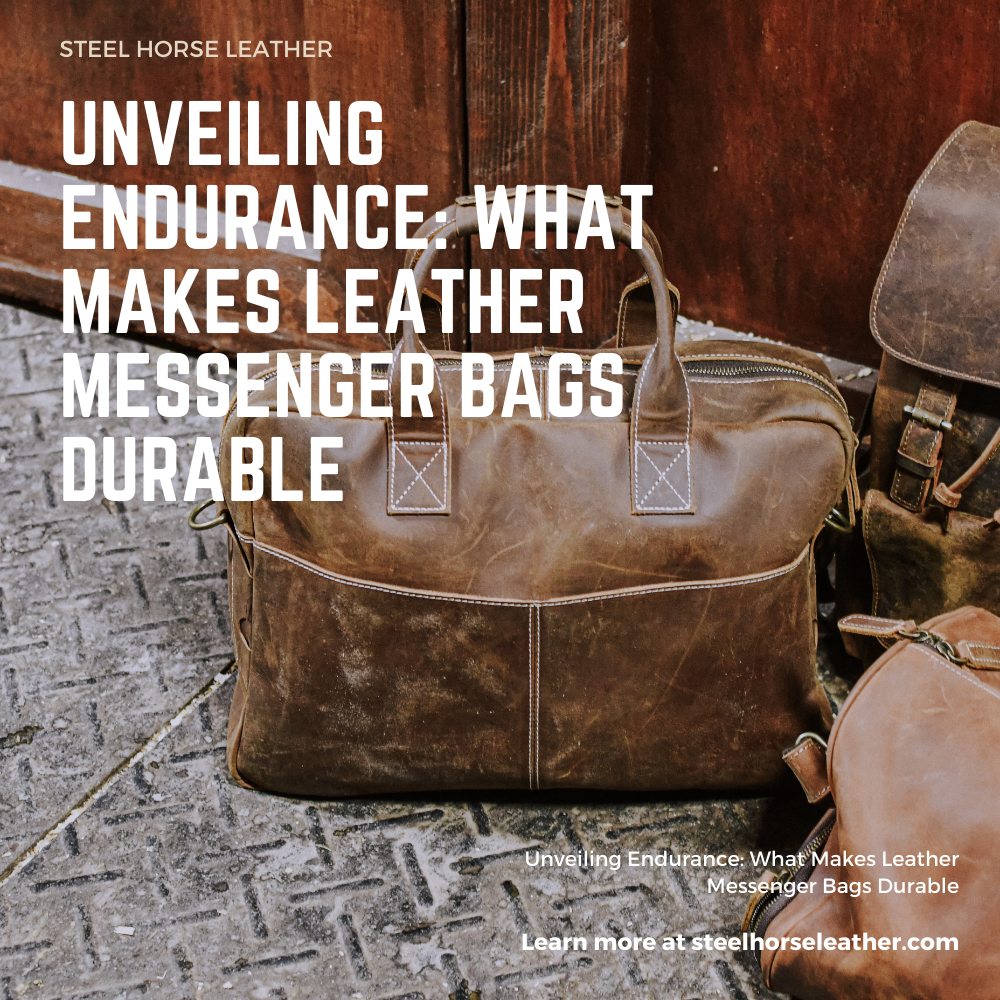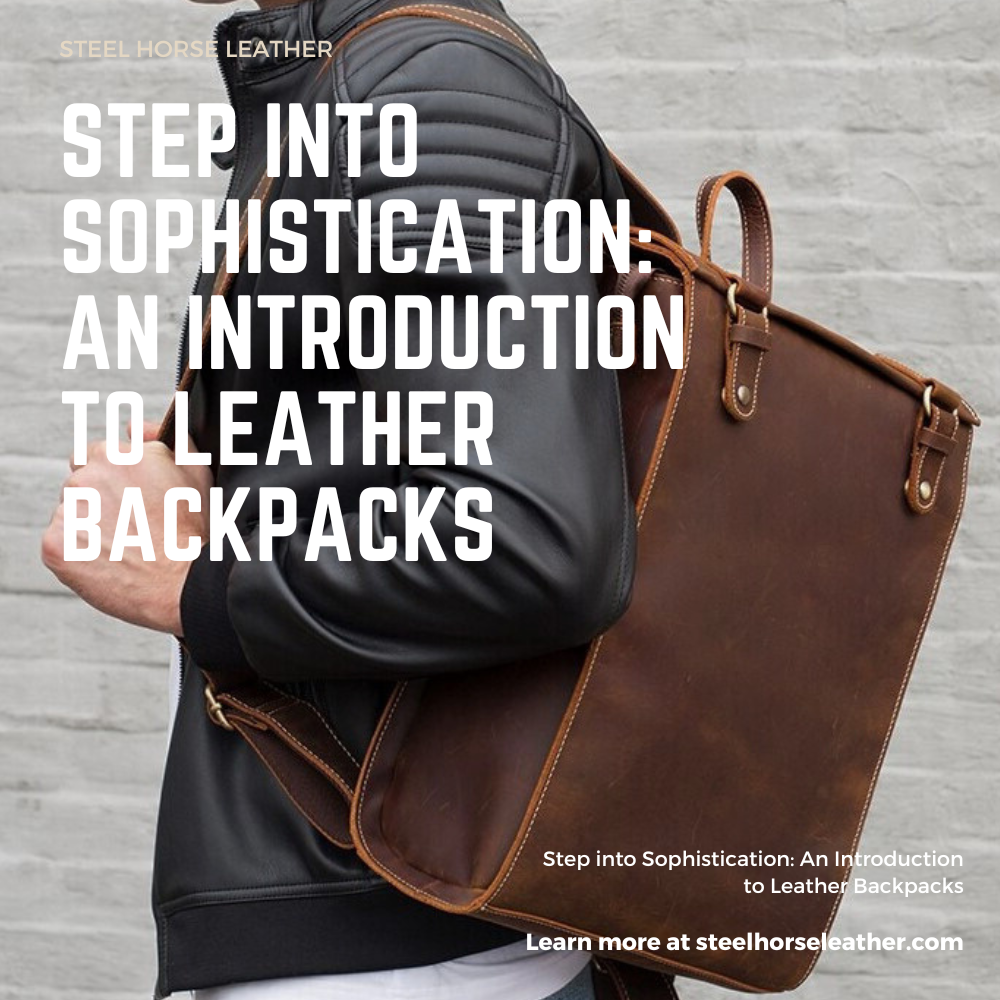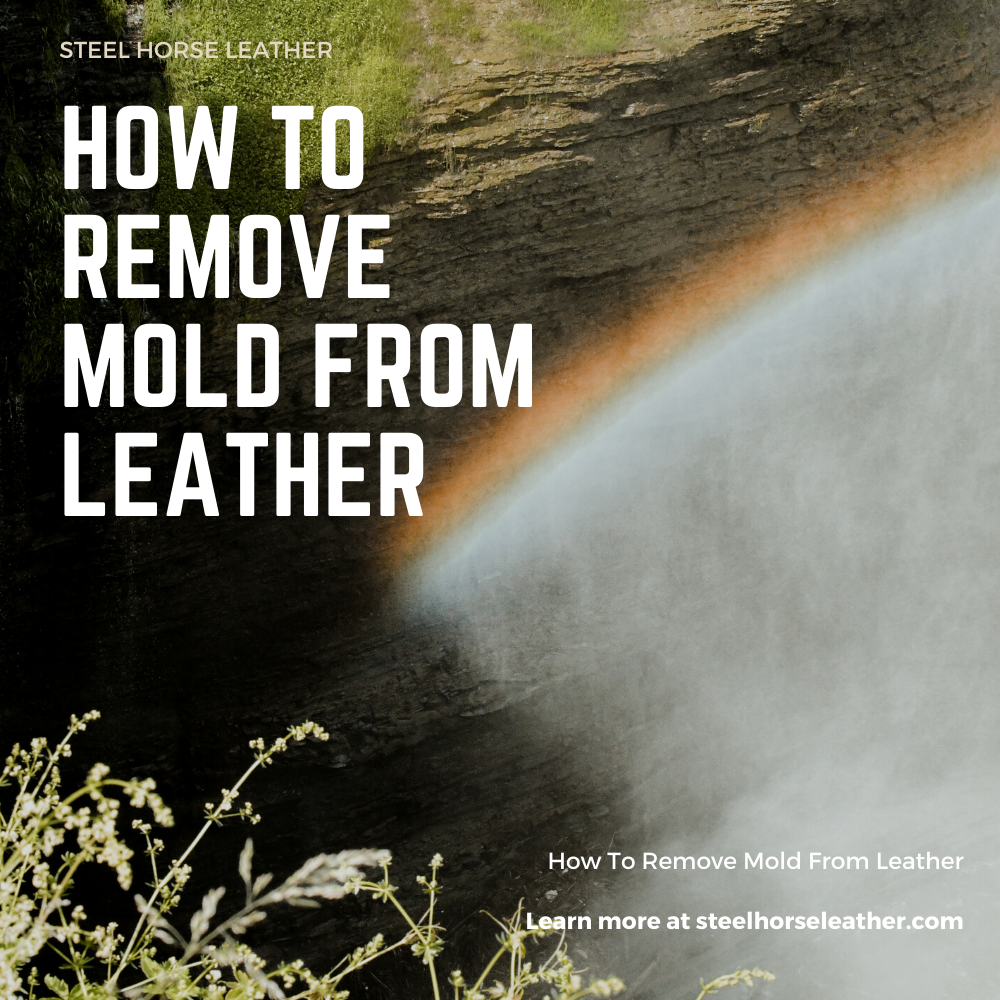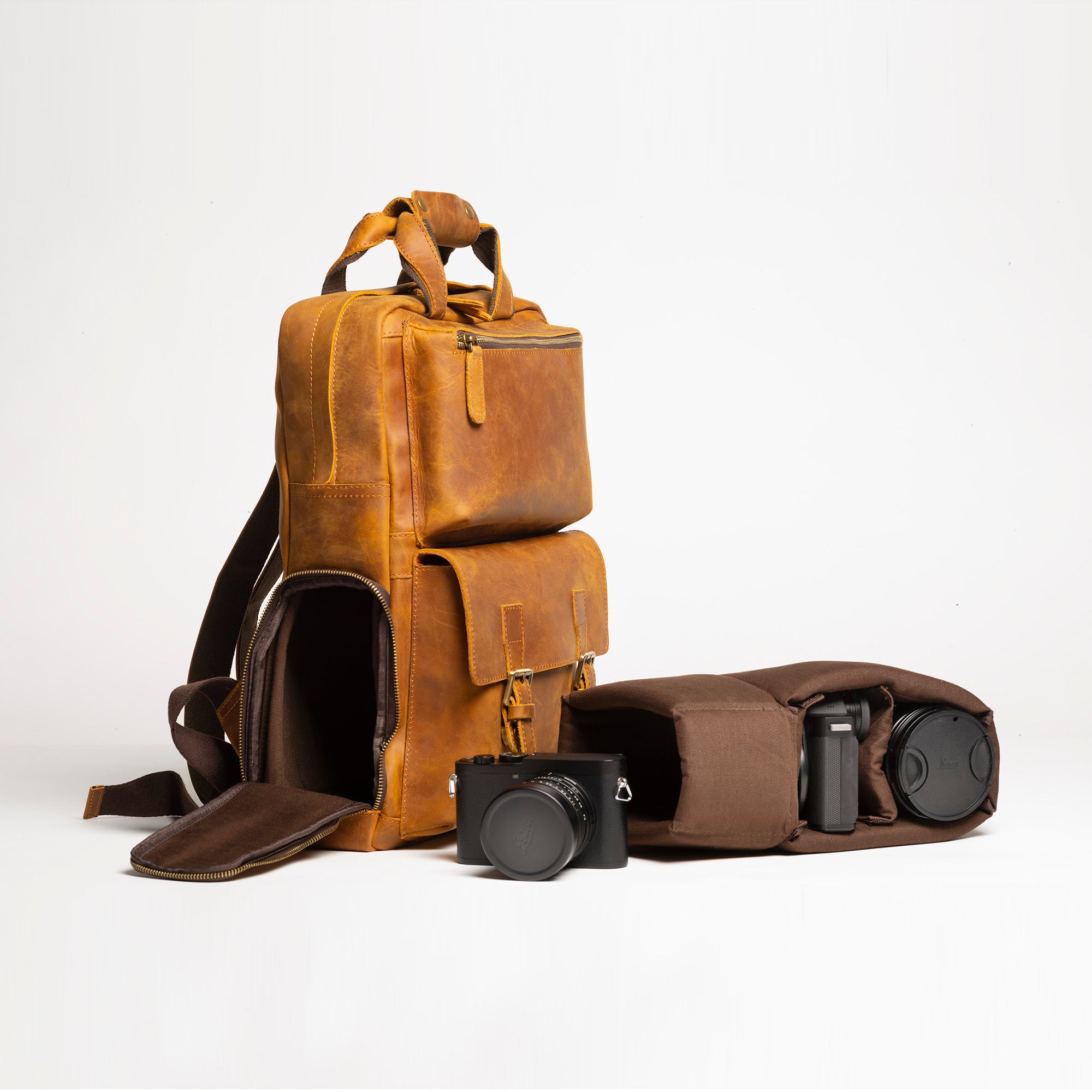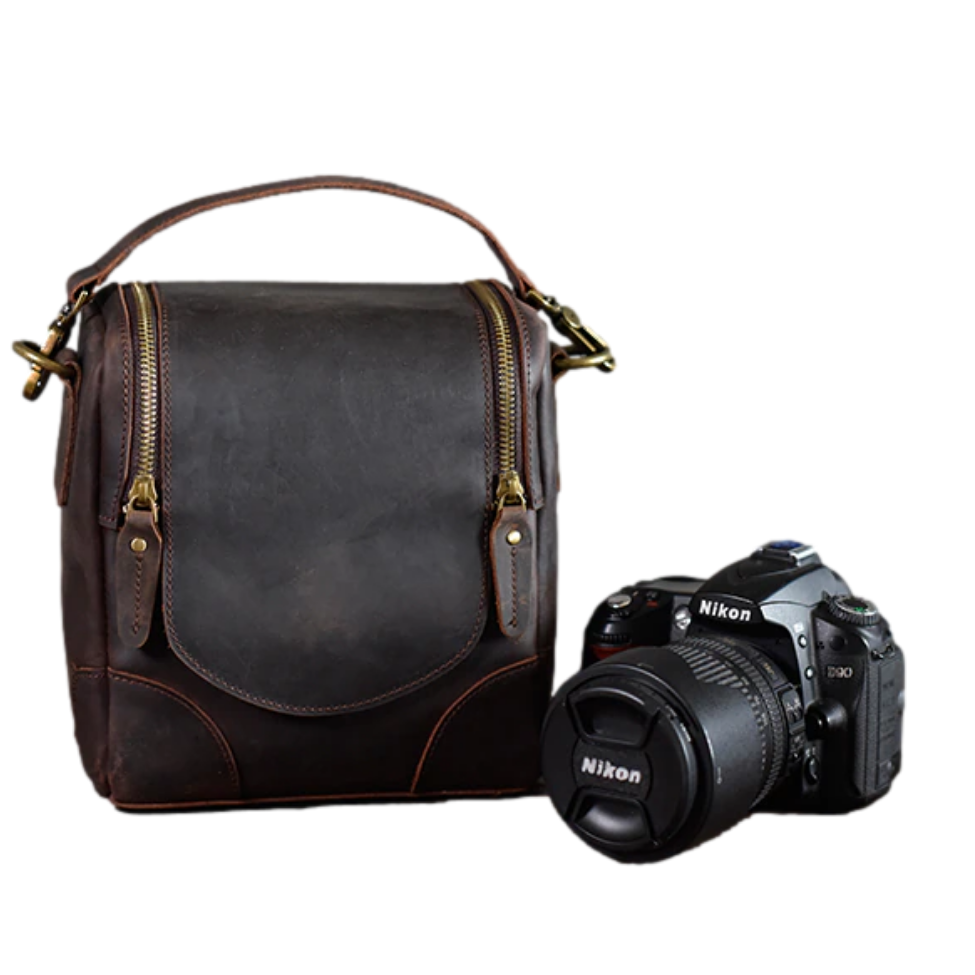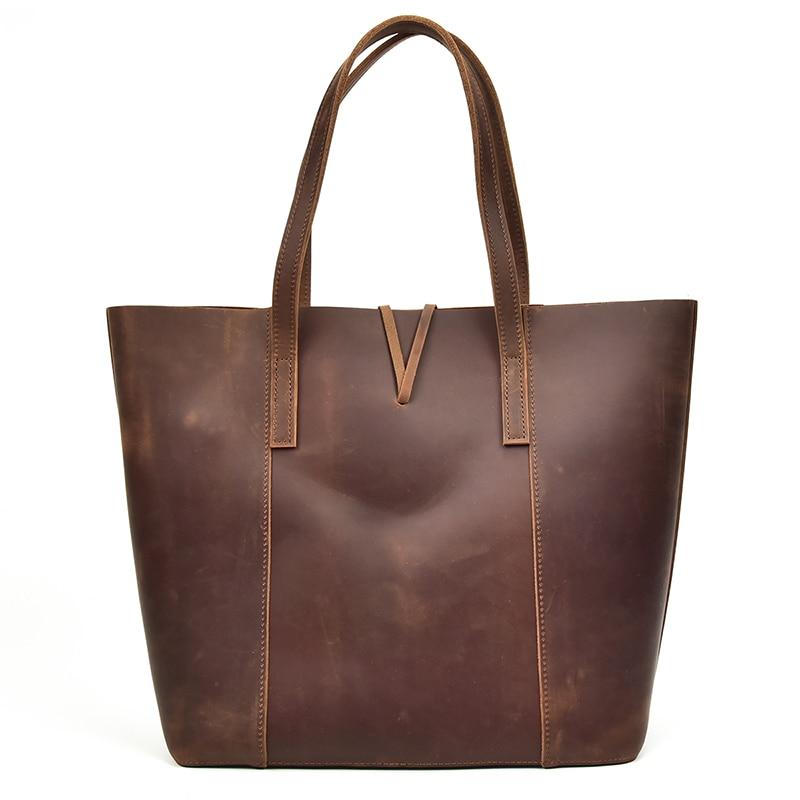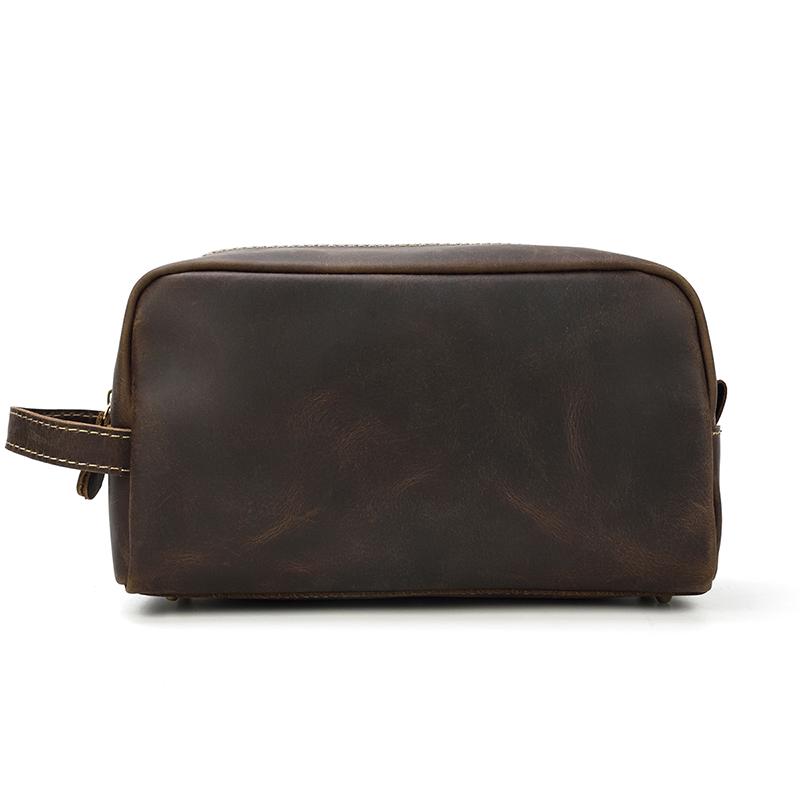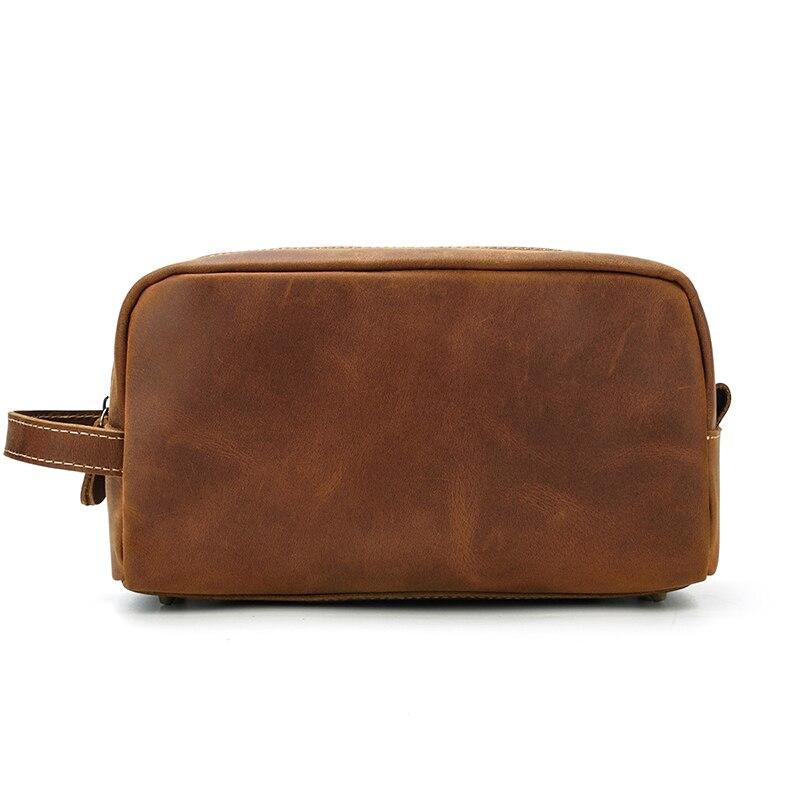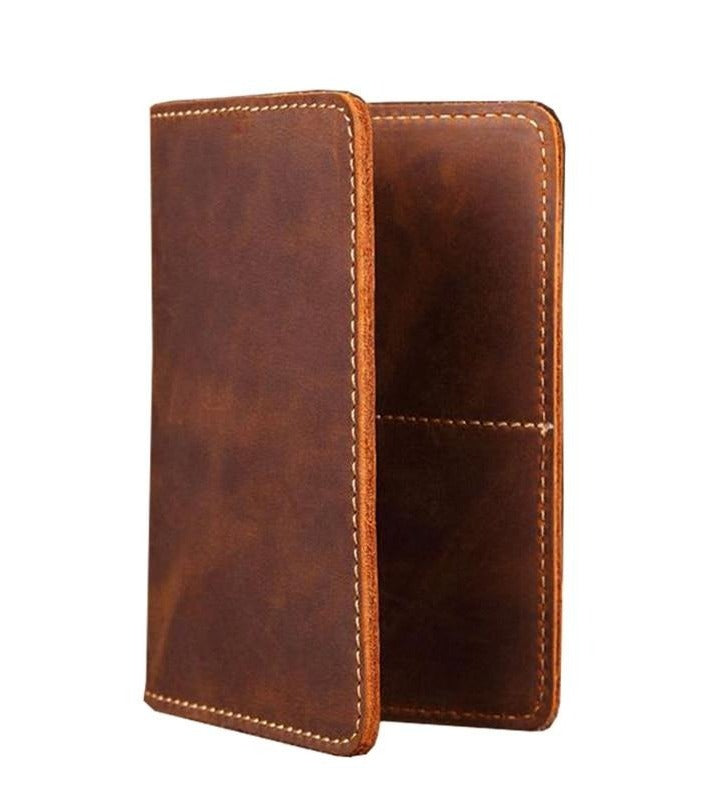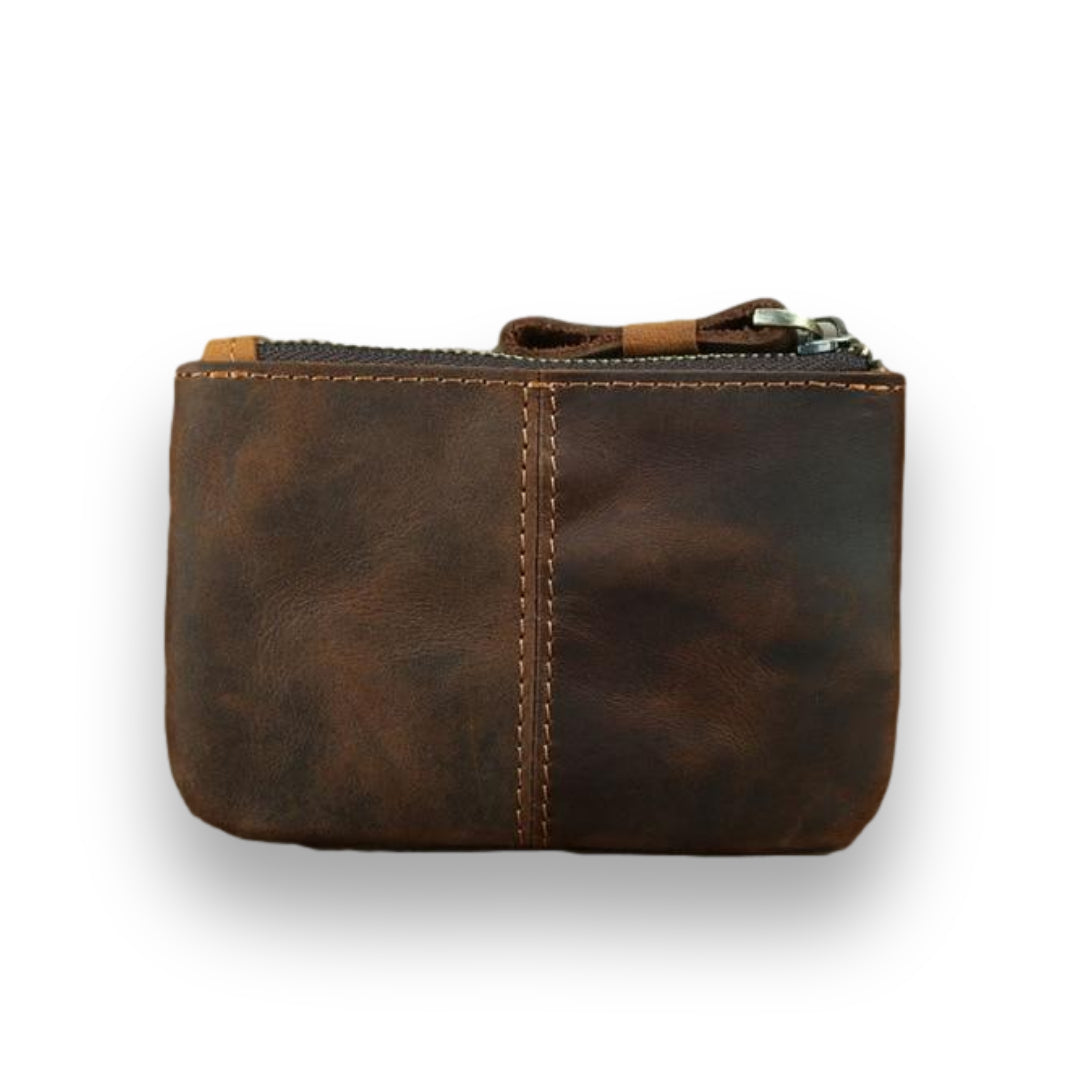It's important to understand different types of leather. In deciding on the best leather for a product or buying custom-made items, it's essential to know the various types of leather and how they are made. This glossary explains the various types of grain and their manufacturing processes in general terms. Customers should ask about the terms and conditions first when deciding how to purchase a leather product. Because most leather resellers have never tanned their own hides, they cannot claim to know the difference between cowhide and horsehide. Steel Horse Leather only offers quality leather products that are actually made with genuine, 100% top-quality leather. We refuse to use any types of leather that have a lower standard of quality and authenticity than our own, as we believe it is unethical to sell an inferior product.
Leatherworking has been around for as long as man has been eating meat. It’s a centuries-old craft that is experiencing renewed popularity as consumers seek authenticity in their goods. This makes learning about leather craft a delight, especially with all the terminology and history that can be uncovered by doing so. When you’re buying leather products, you want to make sure that you have a good understanding of what you’re buying. This can be accomplished by having a thorough knowledge of the terms used in marketing or by looking into the different types of leather.
Key Takeaways
- Full-Grain is Top Quality: Full-grain leather is the highest quality, valued for its strength, durability, and natural appearance because the entire grain surface is preserved, allowing it to develop a beautiful patina over time.
- "Genuine Leather" Can Be Misleading: The term "Genuine Leather" is often an ambiguous marketing phrase that refers to corrected or lower-quality leather from any layer of the hide, treated to hide imperfections, making it less durable than full or top grain.
- Layers Determine Quality: The quality hierarchy is based on which layer of the hide is used: the outer, strong Grain layer (used for Full and Top Grain) versus the lower, looser-fibered Corium or processed leather scraps (used for Split Grain and Bonded Leather).
- Know Your Finish: The final process matters: Aniline finishes show the leather's natural beauty, while Pigmented finishes apply paint for a uniform, protective coat. Nubuck and Suede are similar but made from different layers (Top-Grain vs. Split-Grain, respectively).
Why Trust Our Leather Craftsmanship Expertise?

At Steel Horse Leather, our deep understanding of leather craftsmanship comes from years of hands-on experience and dedication to mastering this ancient art. Our master artisans have spent decades perfecting their craft, combining traditional leatherworking methods with an unwavering commitment to quality. This expertise isn't just theoretical – it's demonstrated daily in our workshop where we meticulously craft each leather piece using time-honored techniques that have been refined through generations of craftsmen. Our knowledge extends beyond mere manufacturing.
We've invested considerable time and resources into understanding the complete leather lifecycle, from sourcing to final product. Through extensive research and partnerships with verified tanneries, we've developed comprehensive expertise in identifying and selecting the finest leather materials. This thorough understanding of leather properties and characteristics enables us to make informed decisions about which types of leather are best suited for specific applications, ensuring our customers receive products that not only look beautiful but also perform exceptionally well over time. What sets our expertise apart is our holistic approach to leather craftsmanship.
Unlike many modern manufacturers who prioritize mass production, we maintain a direct connection with every aspect of the leatherworking process. From carefully vetting our raw material suppliers to ensuring ethical sourcing practices, we oversee each step with meticulous attention to detail. This hands-on experience with different types of leather, combined with our artisans' deep understanding of traditional crafting techniques, allows us to provide not just products, but also valuable insights about leather care, maintenance, and selection that our customers can trust.
Leather Industry - Types of Leather
Leather tanning has been around for centuries. It is one of mankind’s oldest industries, majoring in the ancient practice of animal skin tannage. The ancient Egyptians, Greeks, Chinese, and Mesopotamians all practiced various kinds of leather tanning. Leather has been used for generations to make a wide variety of items, including clothing, footwear, and armor. From buckets to weapons, leather has been used extensively throughout history. The Industrial Revolution brought with it a slew of new technological breakthroughs that improved the efficiency, environmental friendliness, and hygiene of the leather-making process.
The history of the leather business in the United States stretches back to colonial times. Throughout the 18th century, it increased in tandem with the population. There were about 1000 tanneries in the nation by 1750. By 1840, the population had risen to almost 8000! Shoemaking was the major leather activity of the period. In 1850, there were approximately 11,000 shoemaking firms in the United States.
This remarkable expansion demonstrates leather's critical role in American manufacturing and consumer goods throughout the 18th and 19th centuries. However, modern leather production faces new challenges. Life cycle assessments reveal that processing chrome-tanned cowhide leather results in notable environmental impacts, primarily due to high water consumption, pushing the industry toward more eco-friendly practices including chrome-free tanning agents (Yang et al., 2021; Zhang et al., 2021).
About Cowhide - Types of Leather
A cow, if you've never seen one, is a large animal with thick skin and a lot of it. A full cowhide is fairly thick and is typically too thick for daily leather goods. As a result, it is generally trimmed down to be thinner and more usable for a variety of applications.
Cowhide is composed of two interconnected layers: the corium and the grain. Collagen fibers in the corium are thinner and more flexible, becoming tighter and thicker as they travel up toward the grain, where the fibers are closely packed and extremely strong. Calfskins are thinner, smoother, and softer than older animal hides because the corium thickens with age.
The top of the grain, which faces outward toward the hair, may include imperfections like bug bites, stretch marks, scars, and branding. This implies that the very top of the grain is frequently polished away to make the different types of leather appear more consistent.
The skin of an animal is removed to make the leather hide. Because it is a natural material, it has distinct traits and properties that enable it to perform a role for the animal of which it was a part. It often serves as a protective barrier. This protects the animal's interior organs. Along with hair or fur, it also protects from external factors such as sun, water, abrasions, and other things encountered in daily life.

Leather Hide – The Grain
The grain is the leather hide's outermost surface. It is made up of tight, thick fibers. When the hair is gone, the grain is the layer that was exposed to the elements (air, rain, sun, etc.) and is generally quite strong and smooth among the different types of leather.
Leather Hide – The Grain and Corium Junction
The grain and corium junction is where the tight top layer of the leather meets the looser fibers of the corium. This juncture joins the highly desirable grain layer with the more fibrous and loose fibers of the corium layer.
Leather Hide – Corium
The corium is a layer found within animal skins that is mostly made up of collagen fibers. These are more open and loose than the grain layer. This layer, on the other hand, is ideal for the production of leather. The corium is the thickest layer of an animal's hide. As a result, when splitting a hide, portions of the corium may be found in top grain or genuine leather goods.
Leather Hide – Flesh
The flesh is the layer of the hide that is mostly made up of muscle and fat. It is not very beneficial for end-use leather applications. As a result, leather is often split to remove the layers above it, providing usable material of various grades and quality for the manufacture of leather items.
When evaluating different types of leather grades and quality, it is critical to understand how the leather is prepared, cut, and polished. Let's have a look at the most prevalent options.
Types of Leather Grades
Leather grading is a process of identifying and classifying the manner in which hides are processed, such as splitting or removing layers from the leather. Many people believe that grading is how to classify leather, but it is actually how to describe the splits and surface treatment on the hide. The different grades of leather can impact the overall quality of a piece.
Thus, about the different grades and types of leather used in various products, people referred to as “grades”. We’ll look a little deeper into the grades of hides and their uses later in this article.
At our workshop, we experienced this firsthand while developing The Dagny Weekender, our premium full-grain leather travel bag. During the material selection process, we meticulously examined various leather grades to ensure only the highest quality full-grain leather would be used. This careful selection process was crucial as the weekender needed to withstand frequent use while maintaining its sophisticated appearance.
Full Grain Leather - Best Type of Leather
This leather has the outside layout of the hide, known as the "grain," and has not been sanded or polished to eliminate any flaws. On full grain leathers, just the hair is usually removed. The grain contains finer fibers that are firmly packed, resulting in a surface that is highly robust, durable, and can resist harsh use.
The surface may contain small flaws due to the lack of sanding. These might be scratches from a cow rubbing up against a fence, a minor cut, or scrapes from ordinary living. Full-grain hides with few defects are the most valuable since they are the rarest and most physically attractive.
Those surface fibers are also what give it the highest strength of any leather kind. This makes it suitable for saddlery, footwear, and furniture. Because the outer coating is not removed, it acquires a patina (a surface color change from usage) over time that can be pleasant to the eye. The outer layer also has some water-resistance properties. Full-Grain leather is considered to be the best quality leather among the different types of leather available.
Research confirms this assessment, as studies have demonstrated that leathers which retain their natural surface strength, like full grain, are considered top-tier products due to their rarity and durability. The preservation of the leather's natural grain provides a tensile strength that can resist heavy use (Basil-Jones et al., 2013). This scientific validation underscores why full-grain leather commands premium prices and remains the preferred choice for products requiring exceptional longevity.
A prime example of full-grain leather application can be found in our Helka Backpack project. During its development, we specifically chose crazy horse leather, a type of full-grain leather known for its durability and unique aging characteristics. When designing the backpack, we observed how the natural surface imperfections created a distinctive patina that enhanced the product's vintage appeal. The leather's natural markings and variations made each backpack unique, something our customers particularly appreciated.
Top Grain Leather
This cut is very similar to full-grain, except that the very top layer has been sanded and/or polished to remove finish flaws and inconsistencies. With various dyes and finishes added to it, this softens and makes the leather more flexible.
While this sanding improves the appearance, it also loses much of the strength and some of the water-repellent properties of full grain leather. This is when we start to notice a compromise between leather strength and leather appearance and softness.
Top grain leather is frequently used in high-end leather products, such as purses, wallets, and shoes, because of its softness and flexibility.

Genuine Leather (Corrected Leather)
Genuine leather can be derived from any layer of the hide and is subjected to surface treatment to give a more consistent, "corrected" look. It can be sanded or buffed to eliminate surface defects before being dyed (or spray painted) or stamped/embossed to get the desired surface look.
Because the procedure modifies some of the desirable characteristics of leather, it is frequently used for belts and other similar items, even though it is not of the highest quality.
Split Grain Leather
Split grain leather is a layered cut of leather from the lower layers of the hide's top grain. It is often found in the bottom layer of the hide, above the flesh. Also, below the greatest full grain and top grain cuts. Nonetheless, it is a valuable leather material.
Split grain leather's natural surface is not as thick, tight, or functional as full grain and top grain leather. As a result, it is frequently utilized in leather treatments that are dyed, embossed, or have the surface changed in some way. This enables it to provide some of the benefits of a leather material while also having an aesthetically appealing and often functional surface that is good for leather items.
Bonded Leather (Reconstituted Leather)
Glued leather is similar to scrapple or hot dogs in that it is constructed of finely shredded leather scraps that are bonded together using polyurethane or latex onto a fiber mesh or sheet. The proportion of leather in the final mix might vary significantly (from 10% to 90%), affecting the practical and aesthetic qualities of the end product.
Bonded leather is frequently painted to add color, and it can also be pressed/embossed to mimic the appearance of a specific grain or leather type. For a more in-depth look, see our bonded leather post.
Types of Leather Finishes – Finished Leathers
| 🧾 Type of Leather Finish | 🪶 Description |
|---|---|
| 🎨 Aniline Leather | Dyed with soluble dyes that allow the natural surface (marks and blemishes) to remain visible. Finished with a thin protective layer for durability and elegance. |
| 🪄 Semi-Aniline Leather | Similar to aniline leather but with a slightly pigmented coating for more durability while maintaining a natural look. |
| 🧳 Antique Grain Leather | Treated to create a vintage or aged look, often with multi-tone or rubbed finishes to mimic natural wear. |
| 💎 Bicast Leather | Made with a polyurethane or vinyl coating on split leather. Offers a glossy finish and is an affordable alternative to full-grain leather. |
| 🖌️ Brush-Colored Leather | Color is applied by hand using a brush, resulting in unique gradients and tones for a creative, artisanal look. |
| ✂️ Degrained Leather | The grain layer is removed to create a smooth, uniform surface — visually appealing but less durable. |
| 🐑 Double Face (Double-Sided) Leather | Has two finished sides — such as leather on one and wool on the other — often used for coats and premium accessories. |
| 🧩 Embossed Leather | Patterns or textures are pressed or stamped into the surface for added aesthetic or durability, common in furniture and fashion. |
| 🧵 Embroidered Leather | Decorated with stitched thread designs, adding a luxury and artistic touch to clothing, bags, and décor. |
When leather is manufactured, it can be polished in a variety of ways. These processes produce leathers that may be utilized for a number of purposes. Texture, flexibility, color, and finish are all possible variations. Let's look at some of the most common forms of polished leather.
Aniline Leather
Aniline leather is among the types of leather that have only been colored using soluble dyes. They enable the leather's natural surface to peek through (blemishes, cuts, etc.). Only higher quality leathers are typically utilized because they have beautiful, even surfaces.
It is then coated with a thin protective coating to help prevent the leather from wearing out quickly, as well as any additional stains or discoloration from appearing on the surface. Because it allows the natural surface of the leather to shine through, this dye method may be visually attractive.
Semi-Aniline Leather
Semi-aniline leather is leather that has only been colored using soluble dyes. It resembles aniline leather, although it is just faintly colored. Semi-aniline leathers enable the leather's natural surface to show through (blemishes, cuts, etc.).
It is then coated with a thin protective coating to help prevent the leather from wearing out quickly, as well as any additional stains or discoloration from appearing on the surface. Only higher quality leathers are typically utilized because they have beautiful, even surfaces. Because it allows the natural surface of the leather to shine through, this dye method may be visually attractive.
Antique Grain Leather
Antique grain leather is a type of leather that has been treated with a surface effect to give it the impression of being aged and worn. It might have many tones of finish or a rubbed patten to simulate worn over time. Antique grain leather allows you to create an antique effect in your completed product without having to use other types of leather that are really old or worn out.
Bicast Leather
Bicast is a type of leather that has a polyurethane or vinyl layer imprinted on the surface. The product also has a leather backing with a polyurethane or vinyl imprint. Bicast is inexpensive and almost indistinguishable to the naked eye from real leather.
Brush Colored Leather
Brush-colored leather is leather that has had color applied using a brush. This results in a distinct color pattern on each piece. Variations might be in the gradient, mixing, or overall tone. Bruch-colored leather is ideal for completed products that require a unique and imaginative aesthetic appeal.
Degrained Leather
Degrained leather is a type of leather in which the grain layer has been removed. This usually happens at the conclusion of the manufacturing process. Degrained leather has the advantage of having a smooth, uniform surface that looks pretty beautiful. However, eliminating the grain weakens the layer's outer surface, making it more prone to wear and moisture penetration.
Double Face Leather (Double-Sided Leather)
Double face leather, often known as double-sided leather, is a form of leather with two distinctively polished sides. Sheepskins, for example, have one side that is polished leather and the other that is wool. Another example is leather, which may have two embossed surfaces, one on each side. It might also refer to color, with each side having a different hue or color combination.
Embossed Leather
Embossed leather is a form of leather that is produced by creating raised patterns on the completed skin. Among the different types of leather available, this leather can be stamped, pressed, rolled, molded, or formed in this manner. The embossed features might be patterns, letters, or any other aesthetic improvement to the surface of the leather.
Embroidered Leather
Embroidered leather is a form of leather that has been embellished with embroidery. The skill of decorating fabrics with a needle and thread is known as embroidery. The tread pattern is generally set in such a manner that it creates a decorative pattern or theme that becomes part of the embroidered cloth. This is done mostly for aesthetic or visual purposes.
Faux Leather
Faux leather is a form of synthetic leather that is often produced from polyurethane or vinyl. Faux leather is designed to look like real leather but costs a fraction of the price. It is commonly used in the furniture business and has the advantages of being less costly (when compared to real leather), more durable, and easier to clean.
While leather is a natural skin material that can be used to imitate the look and feel of real leather, it may not replicate all qualities such as resistance to wear and tear, breathability, and elasticity.
Faux leather can be referred to by a number of names, which can include:
- Faux Leather
- PU Leather
- Vinyl Leather
- Vegan Leather
Hand Worked Leather
Handworked Leather is a type of leather created by the manual application of leather tools. On better quality products, the leather will be created as part of a manufacturing process. This can allow for the creation of a product with stamped, etched, or embossed surfaces that look quite stunning.
Interwoven Leather
"Interwoven" is a word that actually comes from weaving. Weaving is the process of making long-lasting products made from natural materials such as leather, wool, and silk. This process is extremely versatile and can be used for bags, belts, and straps. "Weave" and "braid" are also words that come from this same process.
Metallic Leather
Metallic leather is a type of leather that has a metal coating applied to it during the finishing process. This coating gives the final leather a metallic, glossy, and reflecting appearance. It is mostly utilized as a finishing choice in clothes, accessories, and purses.
Nappa Leather
Napa leather is more of a marketing term for soft, silky, full-grain leather. Some napa is produced from genuine leather and isn't of the highest quality; the term isn't a reliable indicator of quality or material. It can also refer to smooth, soft leather.
Nubuck Leather
Nubuck is top-grain leather that has had the surface sanded to leave the surface with a small nap of short protein fibers. This results in a smooth, velvet-like surface that is both appealing to the touch and has a distinct aesthetic look. Jackets, gloves, and accessories are frequently made from nubuck leather.
Oil Leather (Pull-Up Leather, Waxy Leather, Waxed Leather)
Oil leather, also known as pull-up leather, waxy leather, and waxed leather, is among the types of leather with a higher volume of oils and waxes in the surface finish than usual. Because of the reflections on the oils and waxes, the surface of the leather pieces catches the light in different ways when bent and moved. This creates a diverse appearance across surface tones, which might be extremely pleasing visually.
Patent Leather
Patent leather is a type of leather with a high-gloss surface that is treated with a coating, typically linseed oil. It was created in 1818. (by inventor Seth Boyden in Newark, New Jersey). With a highly shiny surface, patent leather finishing is frequently extremely apparent. A plastic coating finish replaces the linseed oil finish on more contemporary patent leather.
Pearlized Leather
Pearlized leather is a form of leather in which a liquid coating of color has been applied to the surface during the finishing process. It gives the leather a smooth, subtle sheen and reflection. While pearlized leather is not as reflective as metallic leather, it is a more subtle use of the same principle. It is commonly found in clothes, accessories, and purses.
Pigmented Leather
Pigmented leather is a type of leather that has a top layer of pigment applied to it (or paint). This pigment contributes to both an even surface on the leather and a protective covering. To assist maintain the pigment layer, pigmented leather is frequently covered with a transparent protective sealer.
Printed Leather
Printed leather is a form of leather with a surface texture printer that has been stamped into it. This results in a variety of leather surface types that can serve both utilitarian and aesthetic purposes. Functional applications may include aiding in the scratch and abrasion resistance of the leather surface. Aesthetic reasons might include making it appear evenly pebbled or nubbed. The textures of printed leathers can also be appealing. A patterned leather is an example of Saffiano leather. For a more in-depth look at pebbled leather, go here to read my post.
Quilon Leather
Quilon is a unique product that is made of smooth leather with a “hair cell” pattern. The original Doc Martens product was made of hand-dyed, raw animal hide from the 1970s. In 2007 Doc Martens decided to revive the leather style and trademark it as Quilon. This highly versatile leather style is now popular among shoe aficionados and fashion-conscious consumers.
Stretch Leather
Stretch leather is a form of leather that is often a composite leather that is designed to stretch when worn. It can utilize a processed leather surface combined with a synthetic bottom layer, allowing the material to stretch while maintaining a consistent appearance and most of the normal performance attributes. Stretch leathers are commonly used in clothing and leather goods that will be worn and will flex with human movement.
Suede Leather
Suede is a kind of leather manufactured in a similar manner as Nubuck, with the surface scraped to leave the surface with a small nap of short protein fibers. Suede, on the other hand, is manufactured from split-grain leather rather than full-grain leather.
Washable Leather
Washable leather is a form of leather that is more easily cleaned. While leather should not be rough-cleaned frequently (and probably should not if well-cared-for), there are specific leather washing solutions available. Washable leather may be used on products that are intended to be used frequently and require regular cleaning, such as some garments, to assist guarantee the items last longer and stay in outstanding form.
There are many types of leathers, ranging from the common cowhide to exotic materials such as python. With a vast range of leathers available, many different uses can be found for each type. Depending on your project, you may find that a specific type of leather is the best choice for your needs.
Leather Thickness - Types of Leather
Leather appointments, such as the thickness and weight, are an important component when deciding what the end product will be. A thin leather (1-3 oz.) has been used to make furniture, jackets, and other fine products. If you're looking for something to make from leather, think about thick leather. It is an excellent choice for leather belts, knife sheaths, holsters, saddlebags, leather bags, and dog collars.
The ounce is the standard unit of measurement for leather. It can also be referred to as ounces per square inch (oz/in). Most leather thickness charts use millimeters (mm) and inch (in) as the measuring unit. An ounce of leather will typically be equal to 0.0064 mm or 0.0036 in. Sometimes, leather hides have varying thicknesses across the hide. This would not be a problem when working with leather but can be an issue when repairing furniture or other items made from leather. When working with leather, it is important to be aware that some hides may have varying thicknesses.
You can vary the thickness depending on your personal preferences. If you'd like thicker leather, you can just adjust the amount of water you use during leather conditioning. Staying within the recommended range will provide increased durability.
Preservation and Conditioning of Leather
Leather is one of the world's oldest materials, used for centuries in clothing, furniture, and other products. However, leather is not indestructible. Exposure to water, sunshine, and leather cleaners can result in leather degradation, which can lead to surface softening and a change in color. Red rot is a destructive fungal disease that infects leather and other materials. It's caused by a fungus called Aspergillus flavus. When exposed to oxygen, it produces toxic substances that cause the formation of a red-colored crust or mold on the surface of the leather or other material. Red rot is irreversible in nature but can be prevented from spreading by using anti-fungal treatments.
Since leather is made up of many thousands of tiny fibers, exposure to low humidity can cause the material to become brittle. This can result in flaking or cracking, especially in areas where the leather is exposed to prolonged periods of extreme dryness. Chemical damage can also occur as a result of exposure to environmental variables such as UV radiation, ozone, acid from sulfurous and nitrous pollutants in the air, or a chemical reaction after any treatment with tallow or oil compounds. At increasing temperatures, both oxidation and chemical damage accelerates.
Additionally, occupational health concerns have emerged regarding leather processing. Research indicates that chromium used in leather tanning can constitute between 0.1% and 4.5% of total leather dust weight, leading to health risks associated with exposure to carcinogenic chromium compounds during manufacturing (Langevin et al., 2013). This underscores the importance of proper ventilation and safety measures in leather workshops.
How to Spot Fake Leather - Worst Types of Leather
There are numerous methods to identify a grain leather imitation, which is embossed to seem like more durable grain leather. If the leather has a highly consistent or boring pattern, this might be an indication of embossing. Artificial leather also lacks the pullup effect, which is a minor color change that occurs when grain leather is twisted or folded. Because painted or polyurethane layers are not porous, they do not absorb leather conditioners efficiently.
Again, a word of warning to consumers: many of these terms are not used consistently, and you can get confused easily. I’ve also noticed that many brands use leather as a marketing term in ways that might not be what consumers expect. It’s important to read the fine print to understand the exact materials that are being used. Genuine leather is an ambiguous term, used as a synonym for genuine split leather to distinguish it from other forms of the material. It is intended to indicate that the material in question is completely genuine and authentic. Unfortunately, many people — including me — have made the mistake of assuming that “genuine leather” means the opposite of “fake.
And many leather goods brands use “genuine” in their product descriptions, hoping to convey the fact that they source from real Italian leather to make their goods. But, confusingly, this term also ends up scaring people off, even if the actual leather is of high quality.
Frequently Asked Questions
What is the Best Leather?
Beyond choosing the right type of leather to suit your wishes, it is also important to choose the leather that has a full-grain finish and good thickness for you to enjoy. When reviewing leather for use in projects, it is also very important to consider personal preference in terms of texture and color.
What is the Strongest Type of Leather?
The strongest leather is the one that shows the most signs of aging. It's been used a few times and isn't in pristine condition. To get the best results, you should use an imperfect piece of leather. It's full-grain, but it has visible signs of wear. This hardens the leather and makes it stronger and more durable.
How Do I Care for Leather Products?
To maintain leather products, clean them with a damp cloth to remove dirt, and apply a leather conditioner regularly to keep them soft and prevent cracking. Avoid prolonged exposure to direct sunlight or moisture, as this can cause damage.
What Makes Full-Grain Leather Different from Top-Grain Leather?
Full-grain leather retains its natural surface, showing unique markings and offering superior durability. Top-grain leather, while still high quality, has its surface sanded and refinished for a more uniform appearance but is slightly less durable than full-grain.
Can Leather Be Repaired if Damaged?
Yes, leather can often be repaired if damaged. Minor scratches or scuffs can be buffed out with a leather conditioner. For deeper cuts or tears, professional leather repair services can restore the material to its original look.
Wrapping It Up - What Are The Types of Leather
You don't have to spend a lot of money on leather goods. How you choose to decorate your home, what you buy, and what you wear are all personal choices, so it might be best not to conform to the latest trends. It's difficult to understand the cost of leather without considering a number of factors including the type of animal hide, tanning process, and finishing touches. Hopefully, this guide will be addressed the common concerns of all shoppers and assisted you in selecting the finest quality genuine leather that is authentic and appropriate for your needs.
Go out there with your newfound knowledge. Be careful, however, about marketing terms, old-fashioned lingo, and honest mix-ups when you’re looking for quality leather. You’ll be better off if you ask questions and listen to others’ concerns.
References
Basil-Jones, M., Edmonds, R., Cooper, S., Kirby, N., Hawley, A., & Haverkamp, R. (2013). Collagen fibril orientation and tear strength across ovine skins. Journal of Agricultural and Food Chemistry, 61(50), 12327-12332. https://doi.org/10.1021/jf4038375
Langevin, S., McClean, M., Michaud, D., Eliot, M., Nelson, H., & Kelsey, K. (2013). Occupational dust exposure and head and neck squamous cell carcinoma risk in a population‐based case–control study conducted in the greater boston area. Cancer Medicine, 2(6), 978-986. https://doi.org/10.1002/cam4.155
Yang, H., An, D., Gaidău, C., Zhang, J., & Zhou, J. (2021). Life cycle assessment of processing for chrome tanned cowhide upper leather. Leather and Footwear Journal, 21(2), 75-86. https://doi.org/10.24264/lfj.21.2.1
Zhang, Z., Liu, Y., Wang, J., Xie, T., Sun, L., & Li, Z. (2021). A chrome-free combination tanning strategy: based on silicic acid and plant tannin. Journal of Leather Science and Engineering, 3(1). https://doi.org/10.1186/s42825-021-00058-z





























